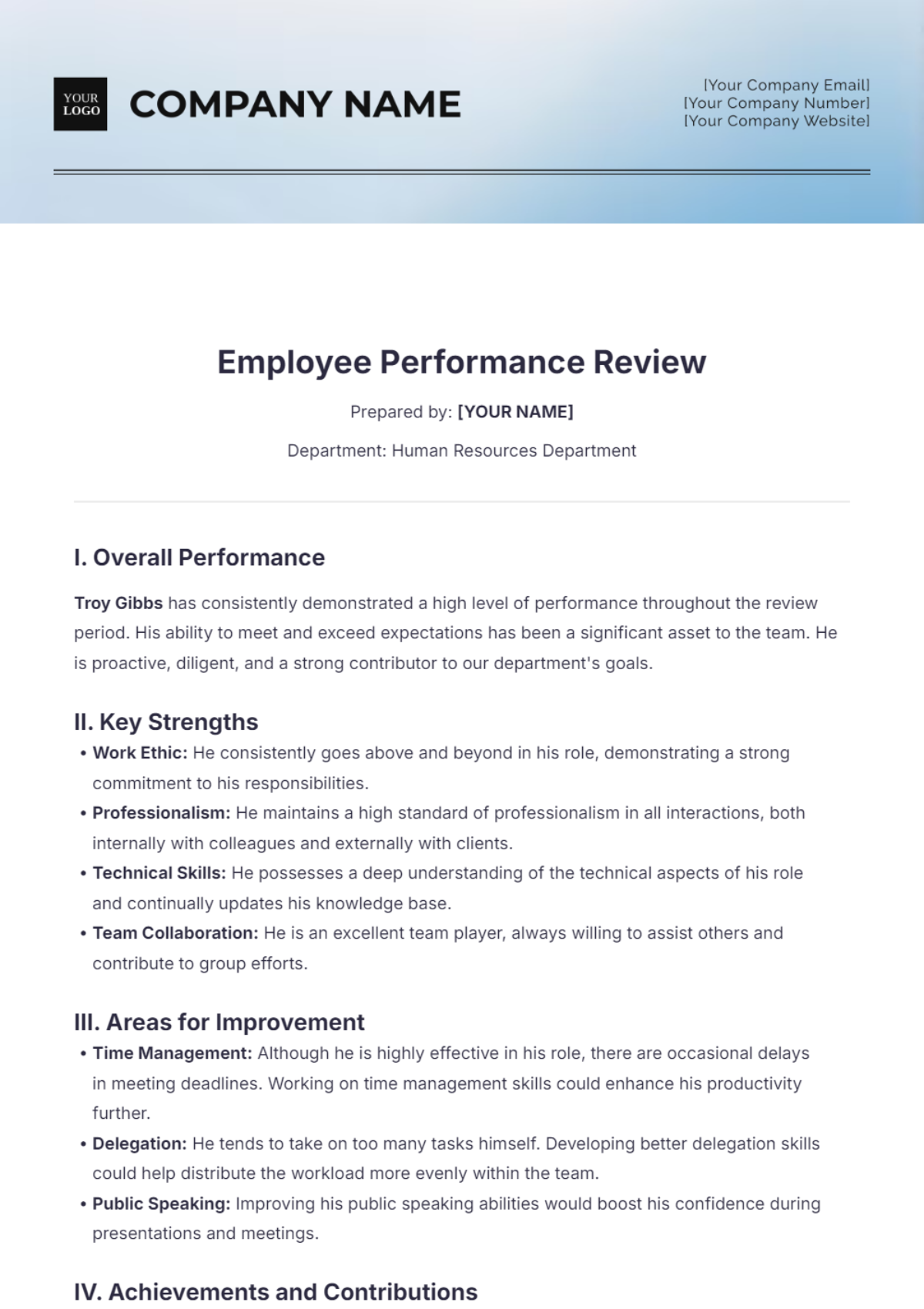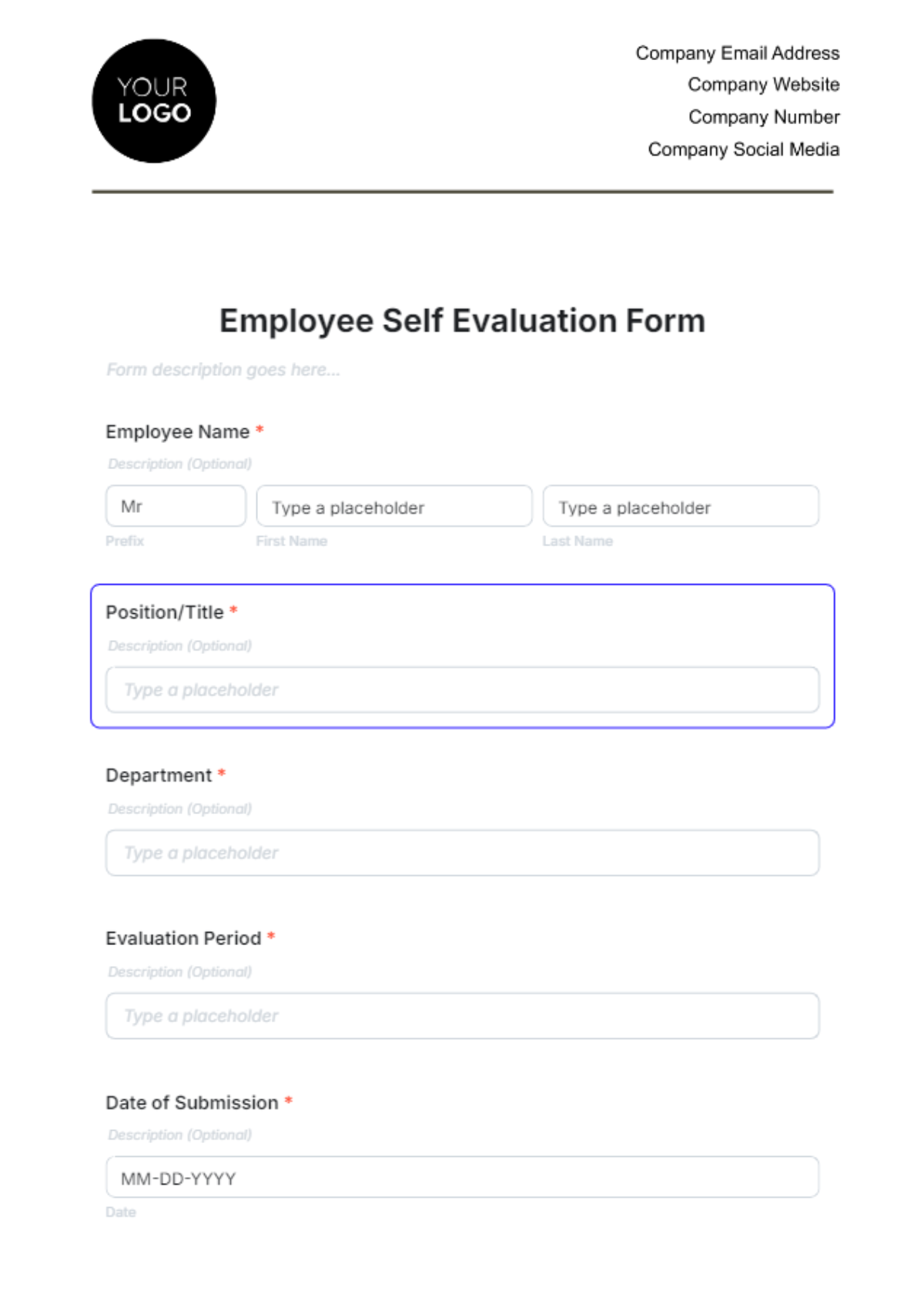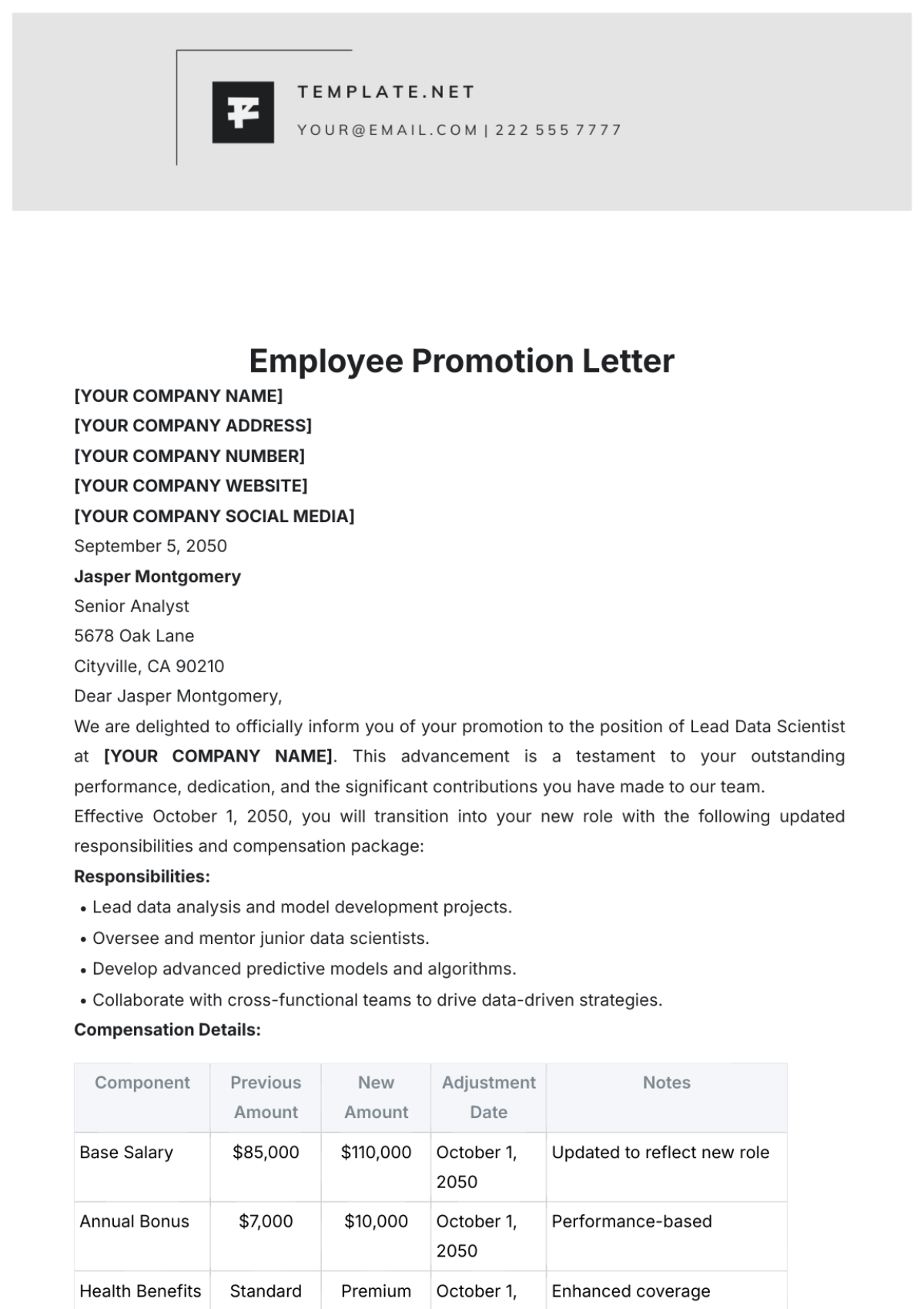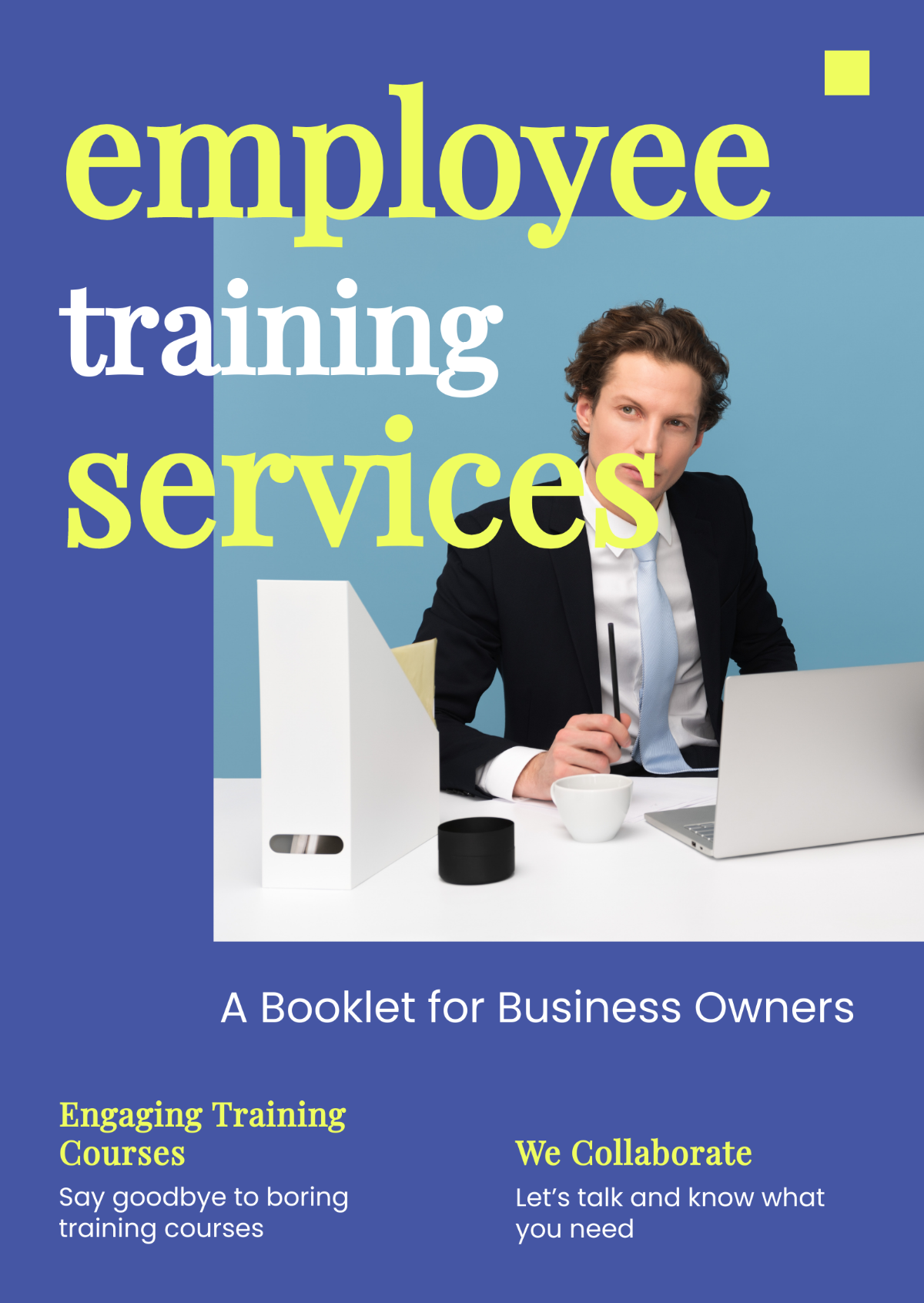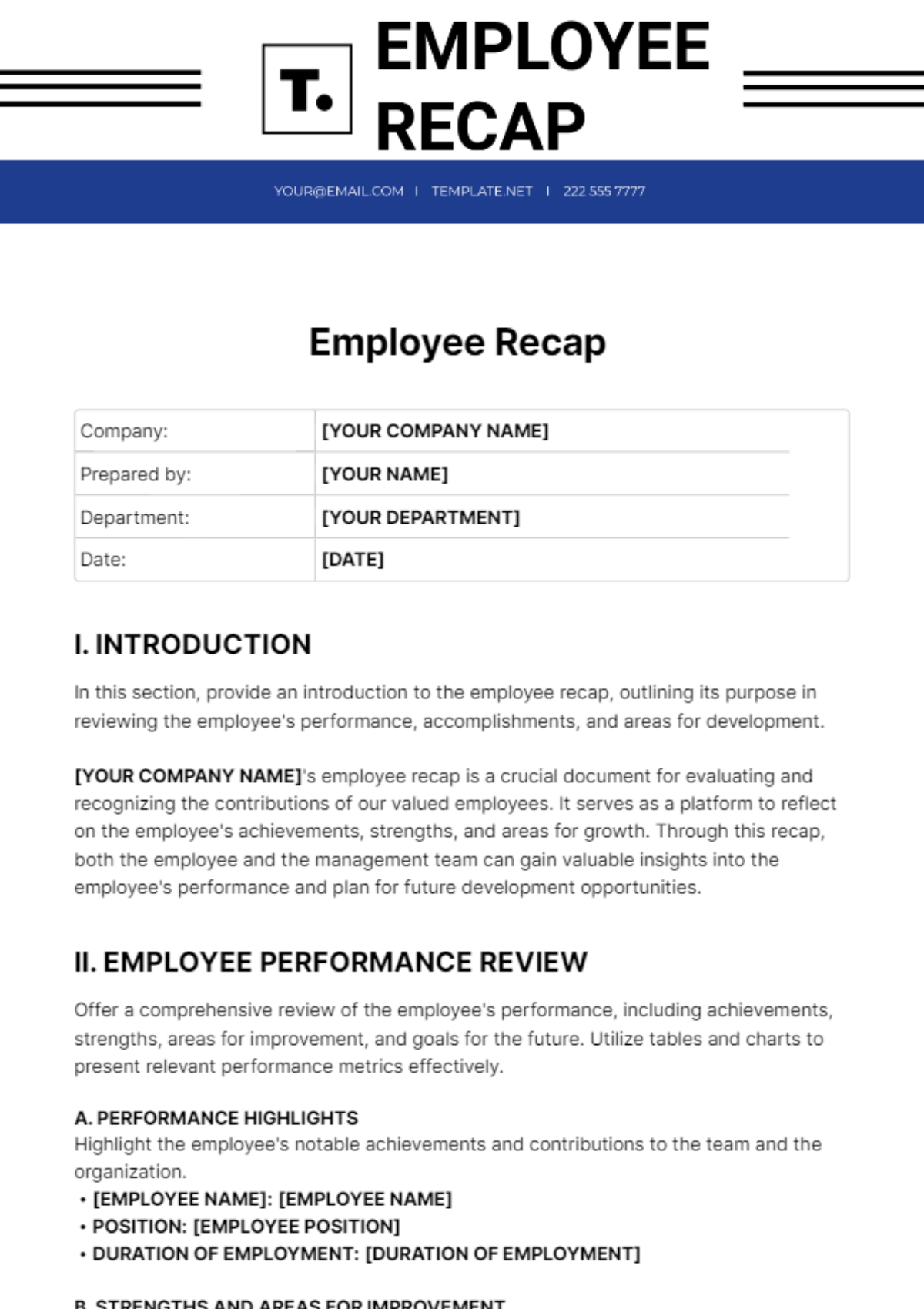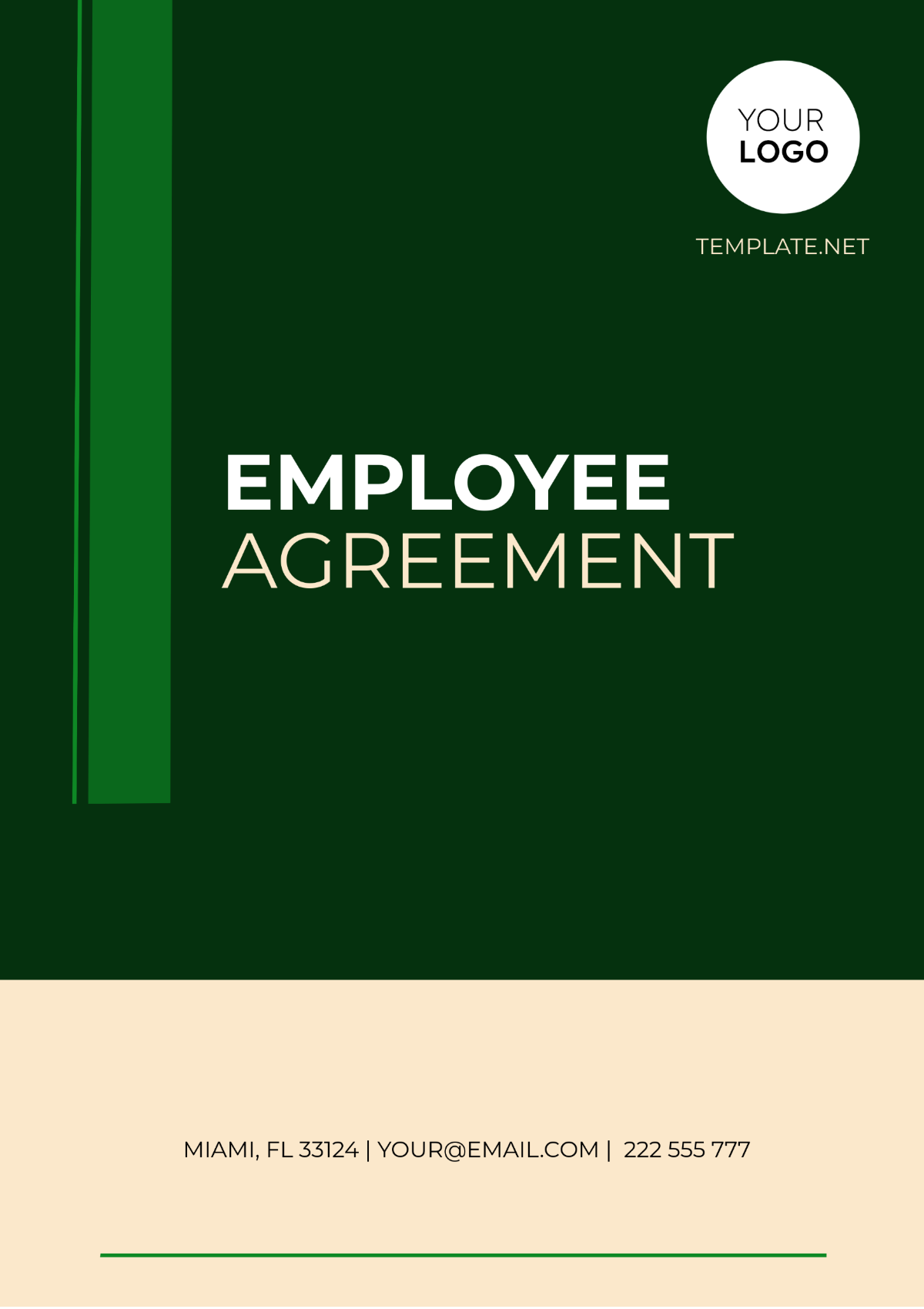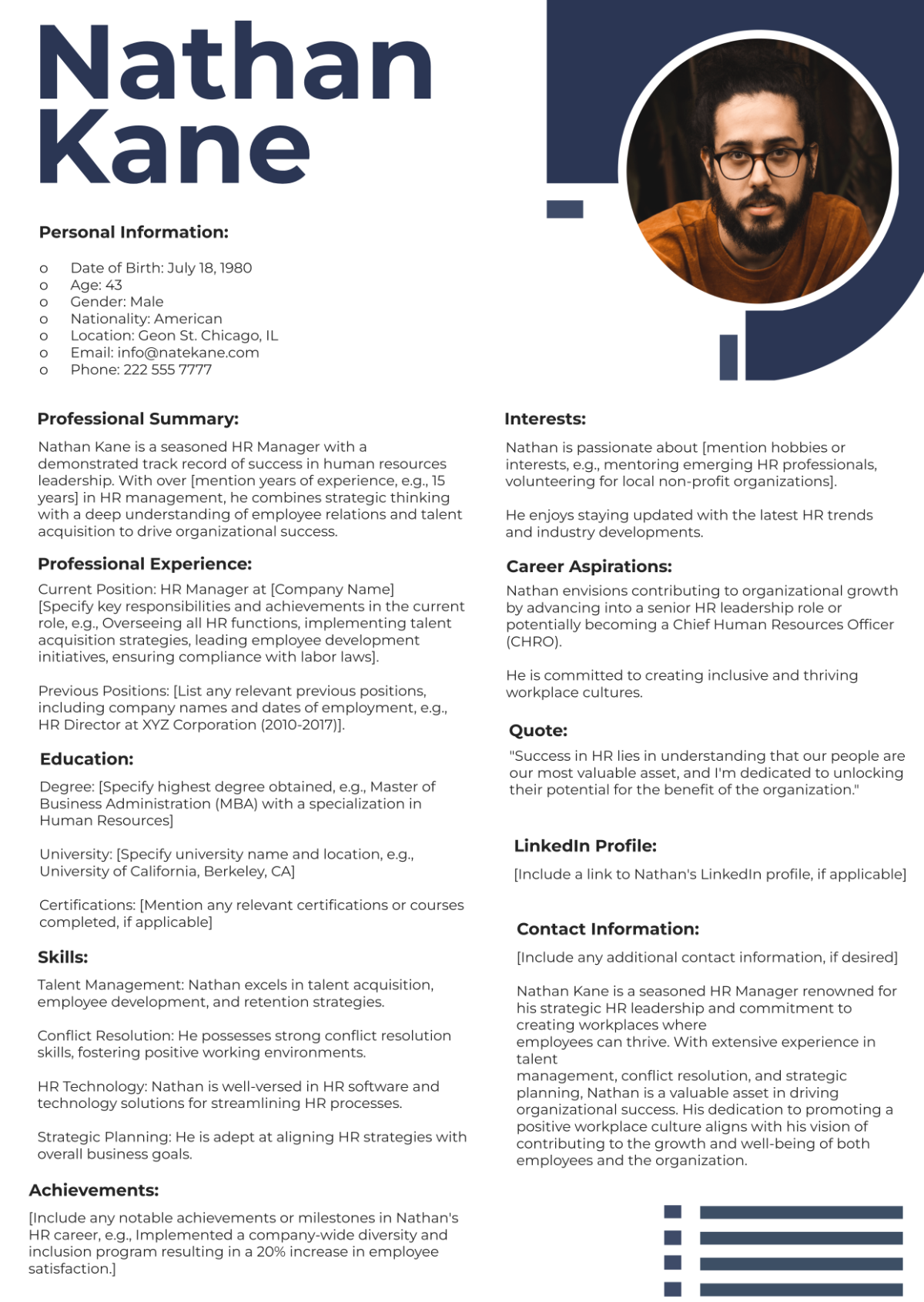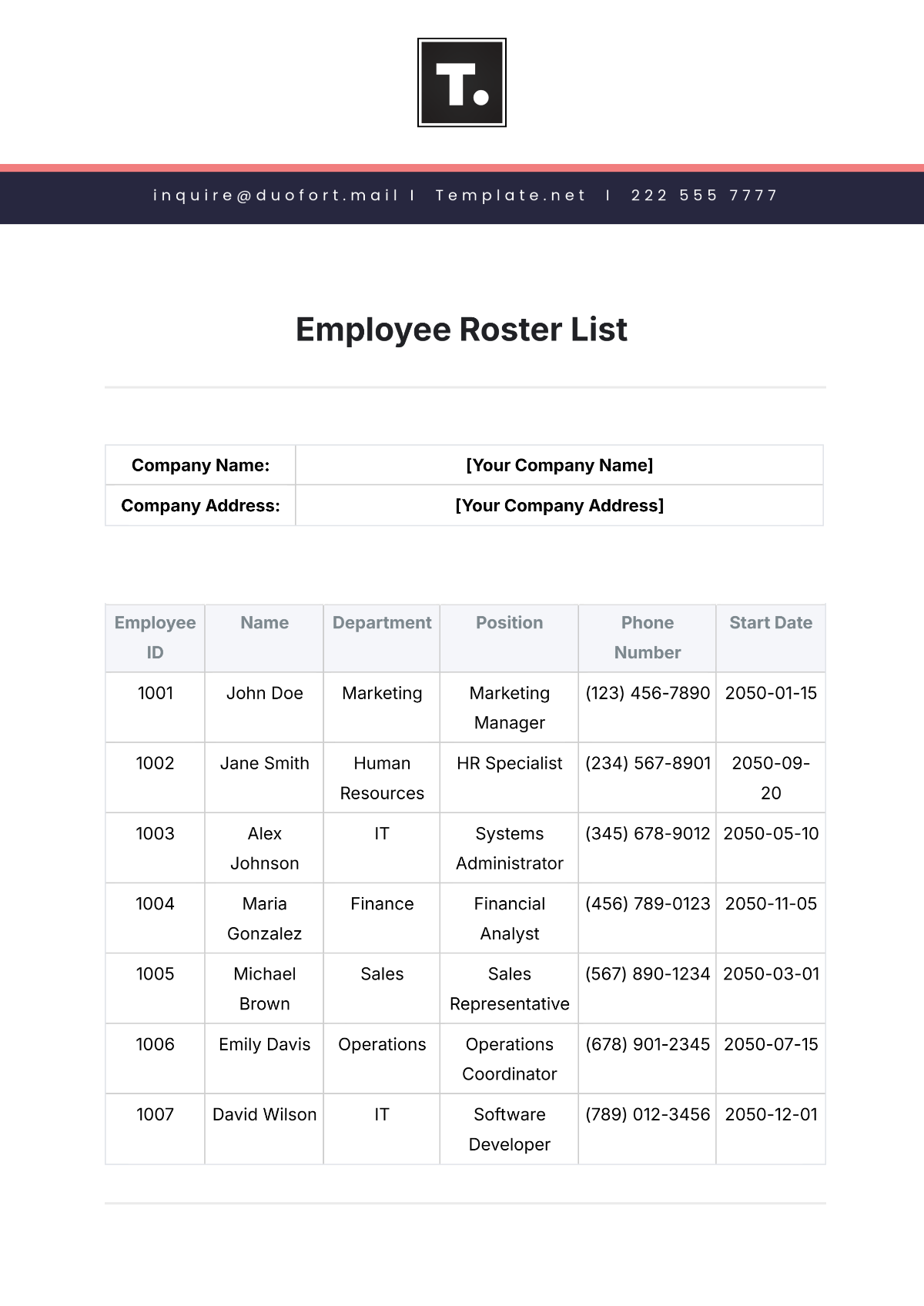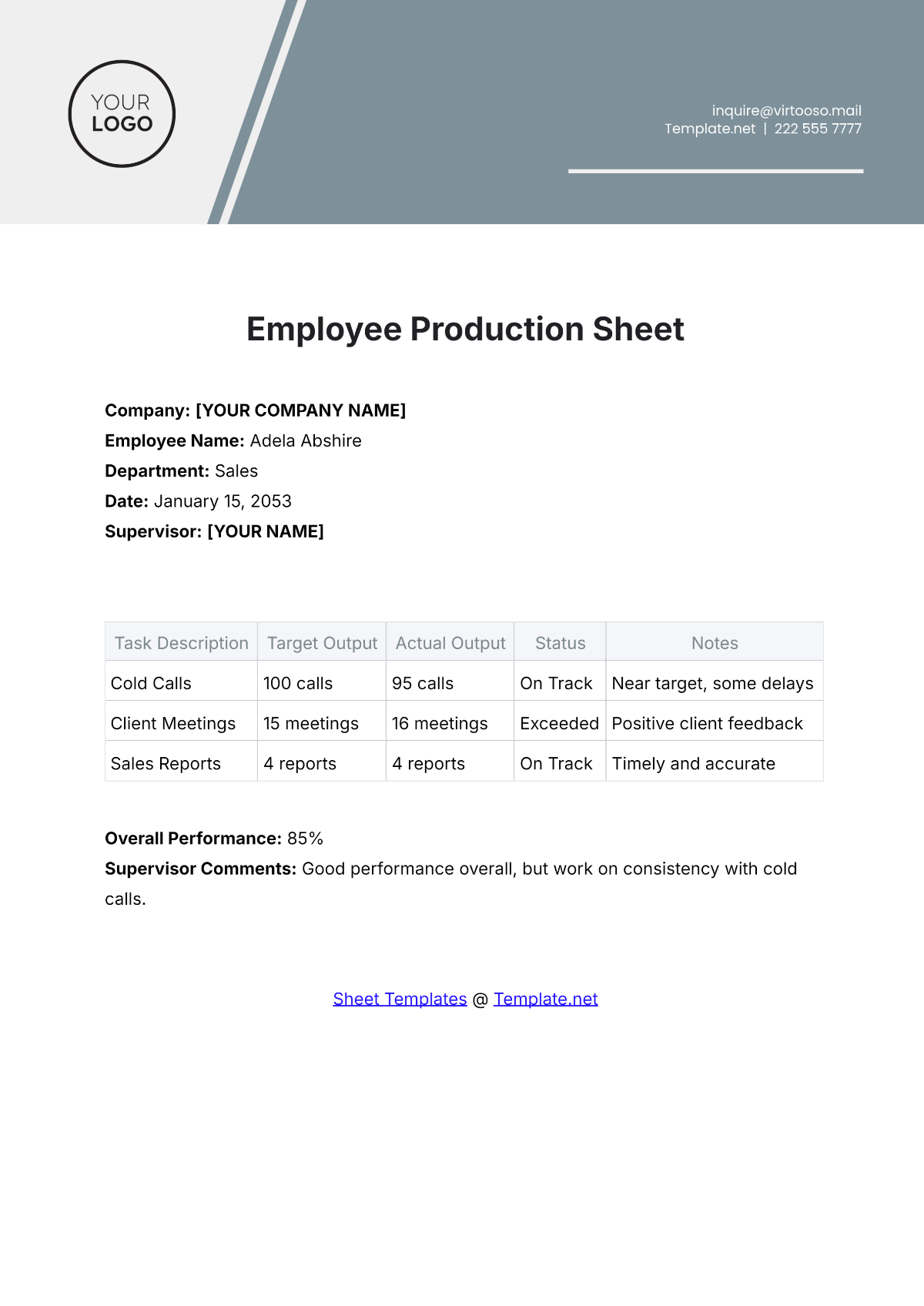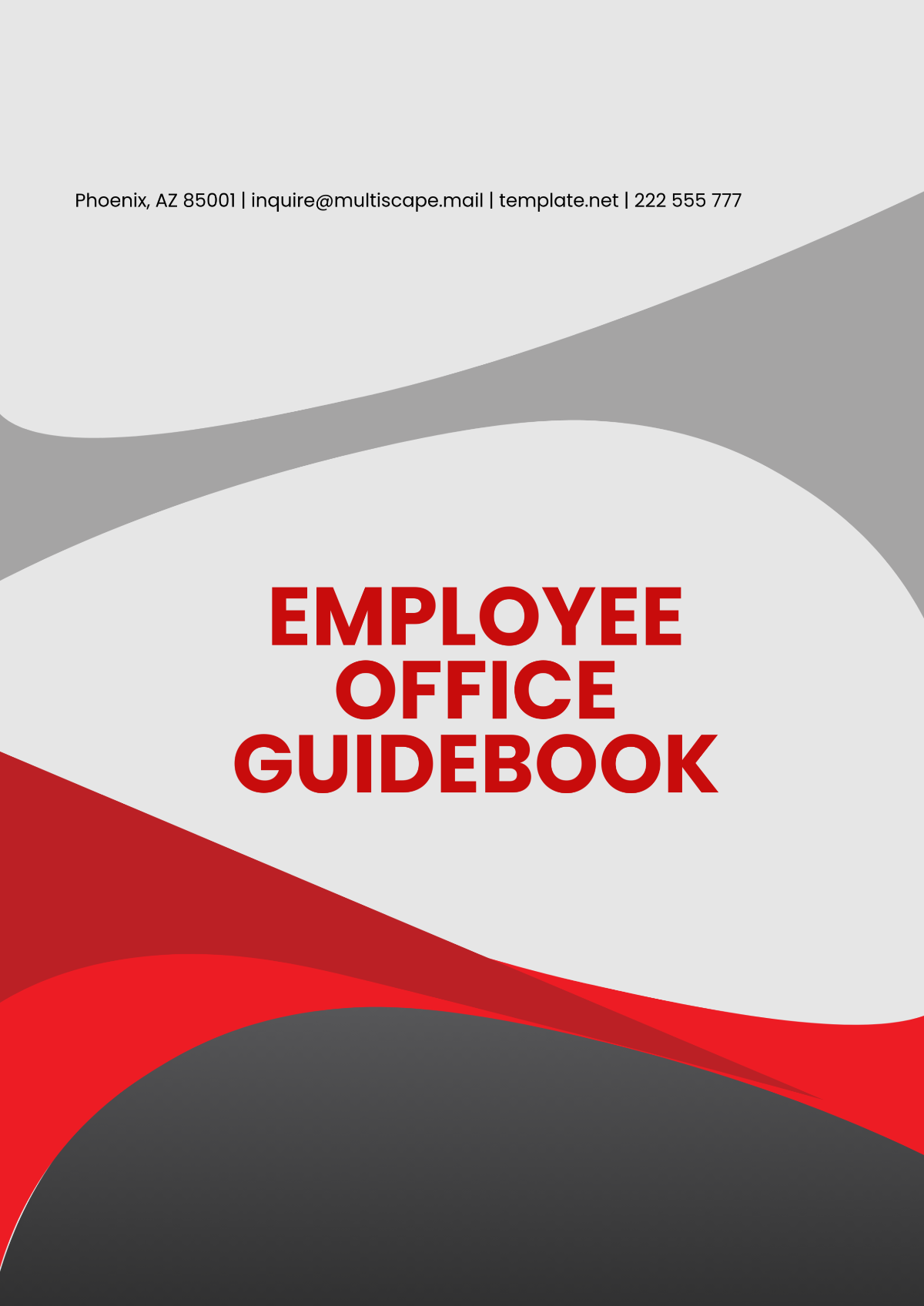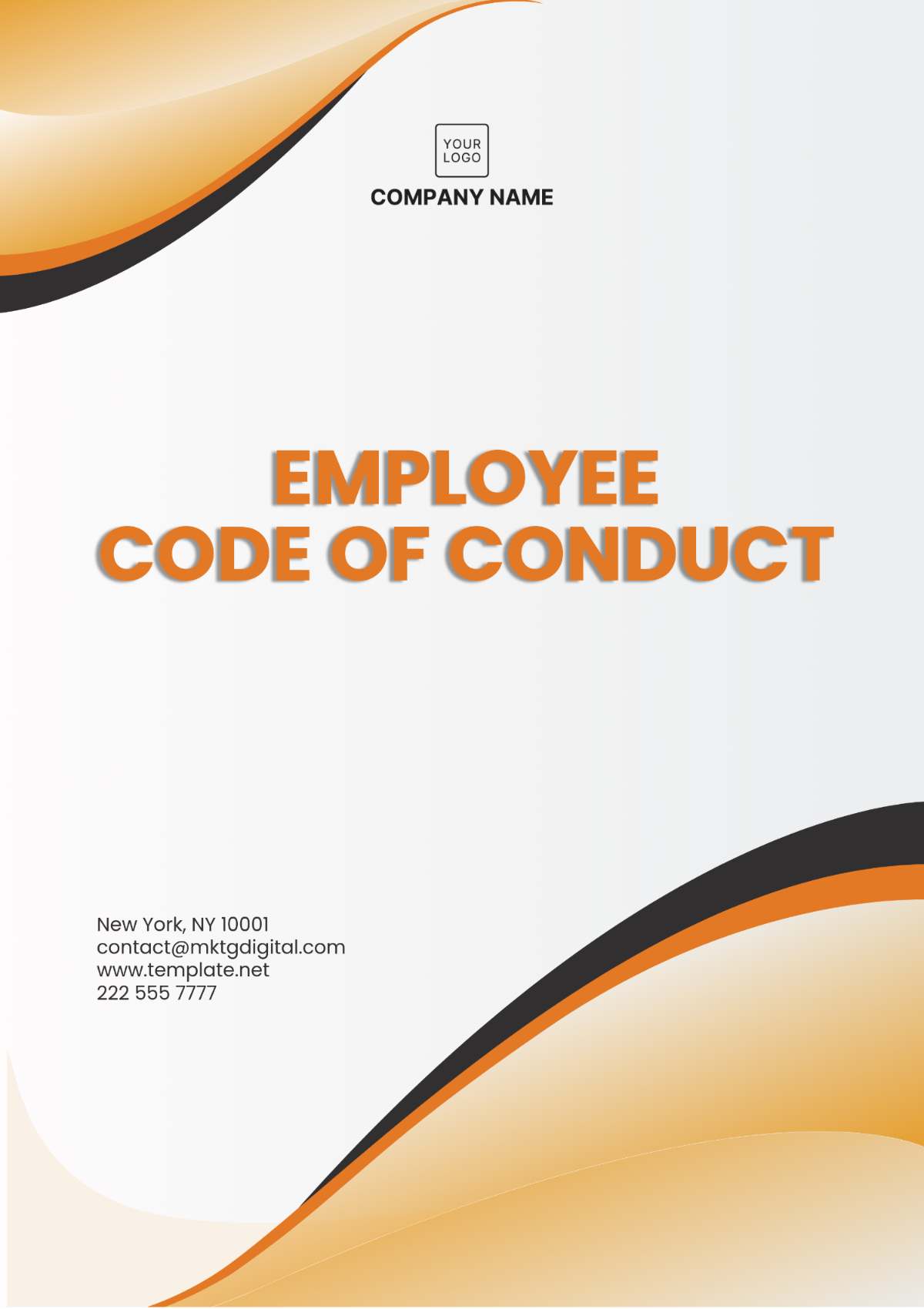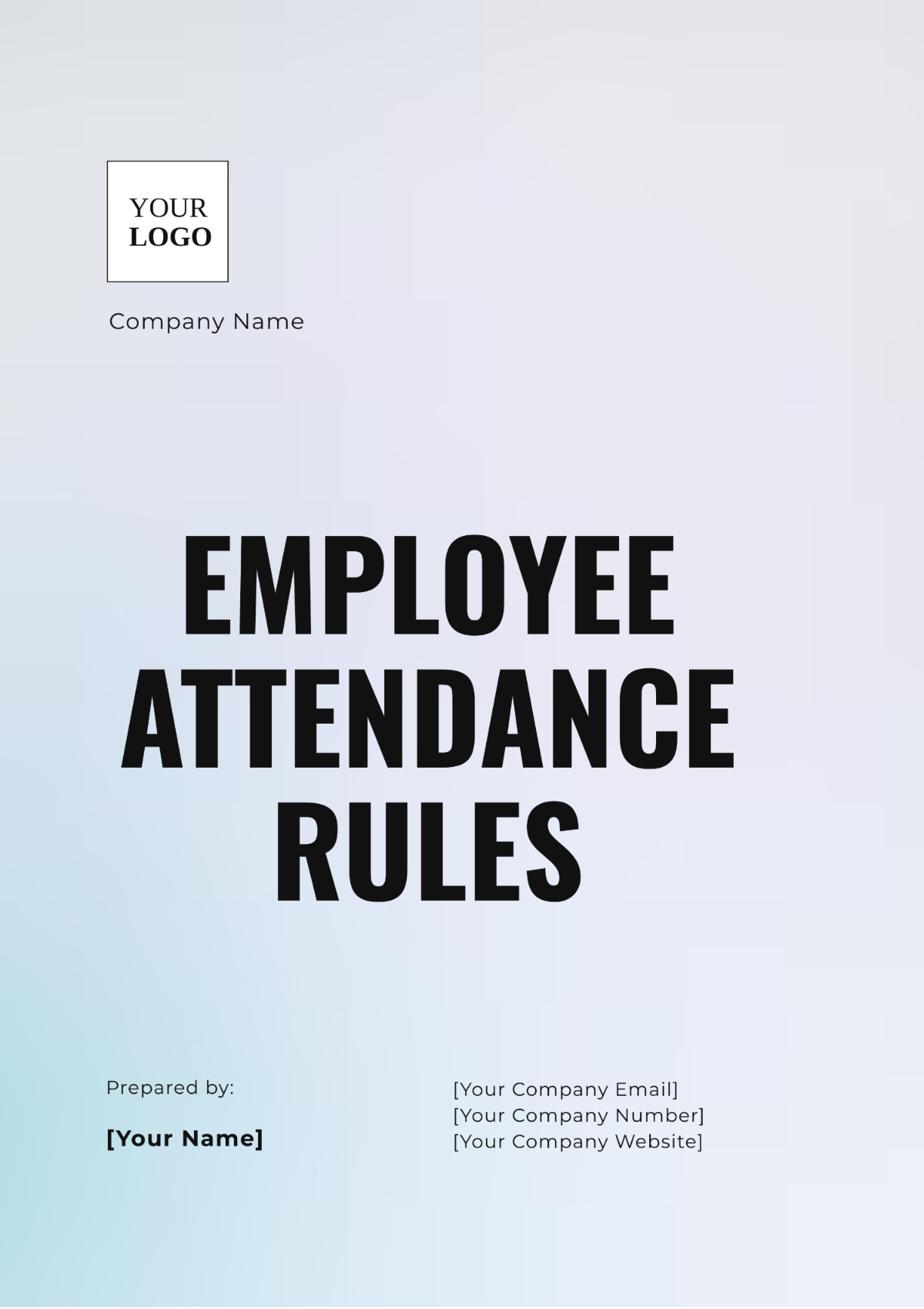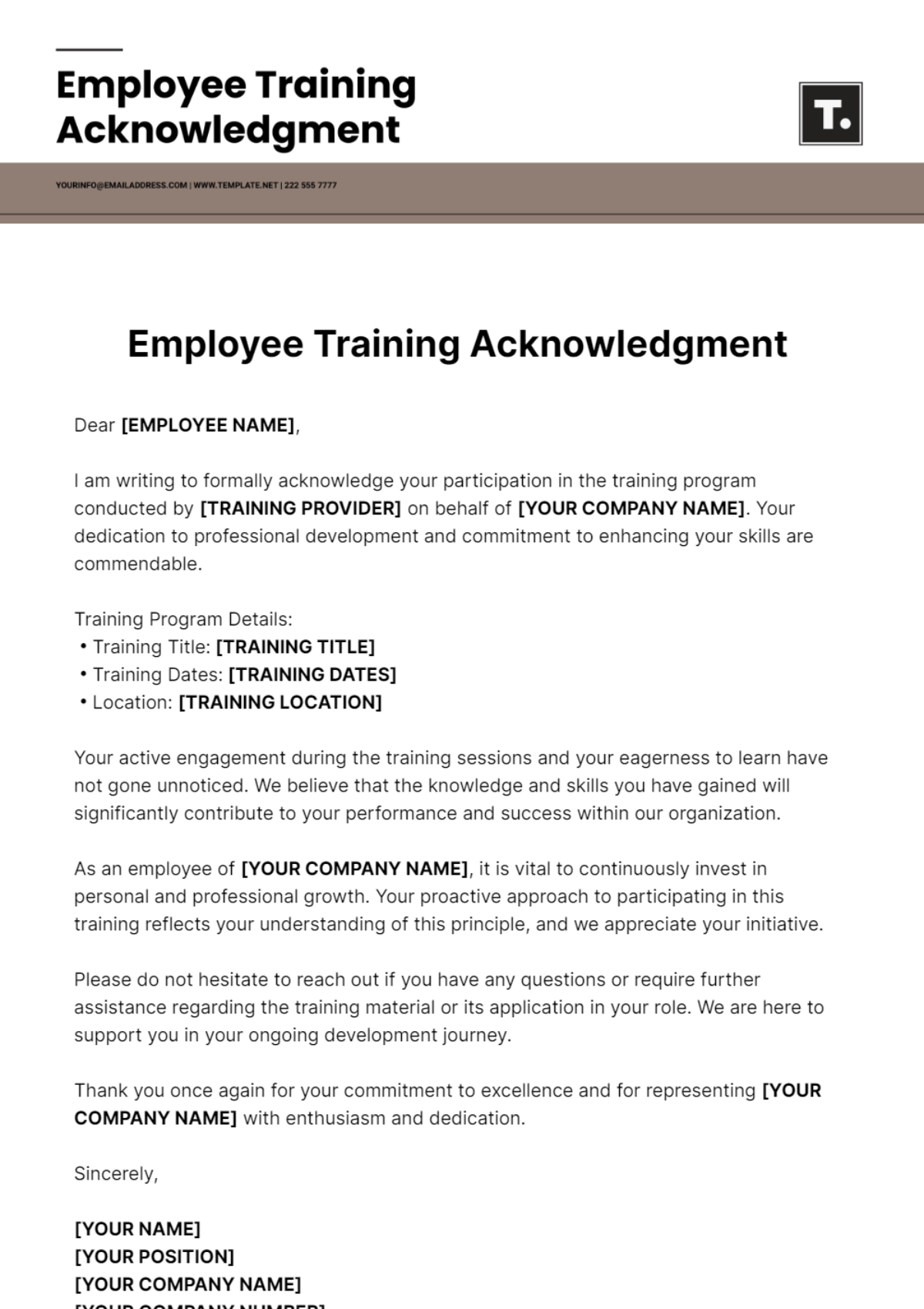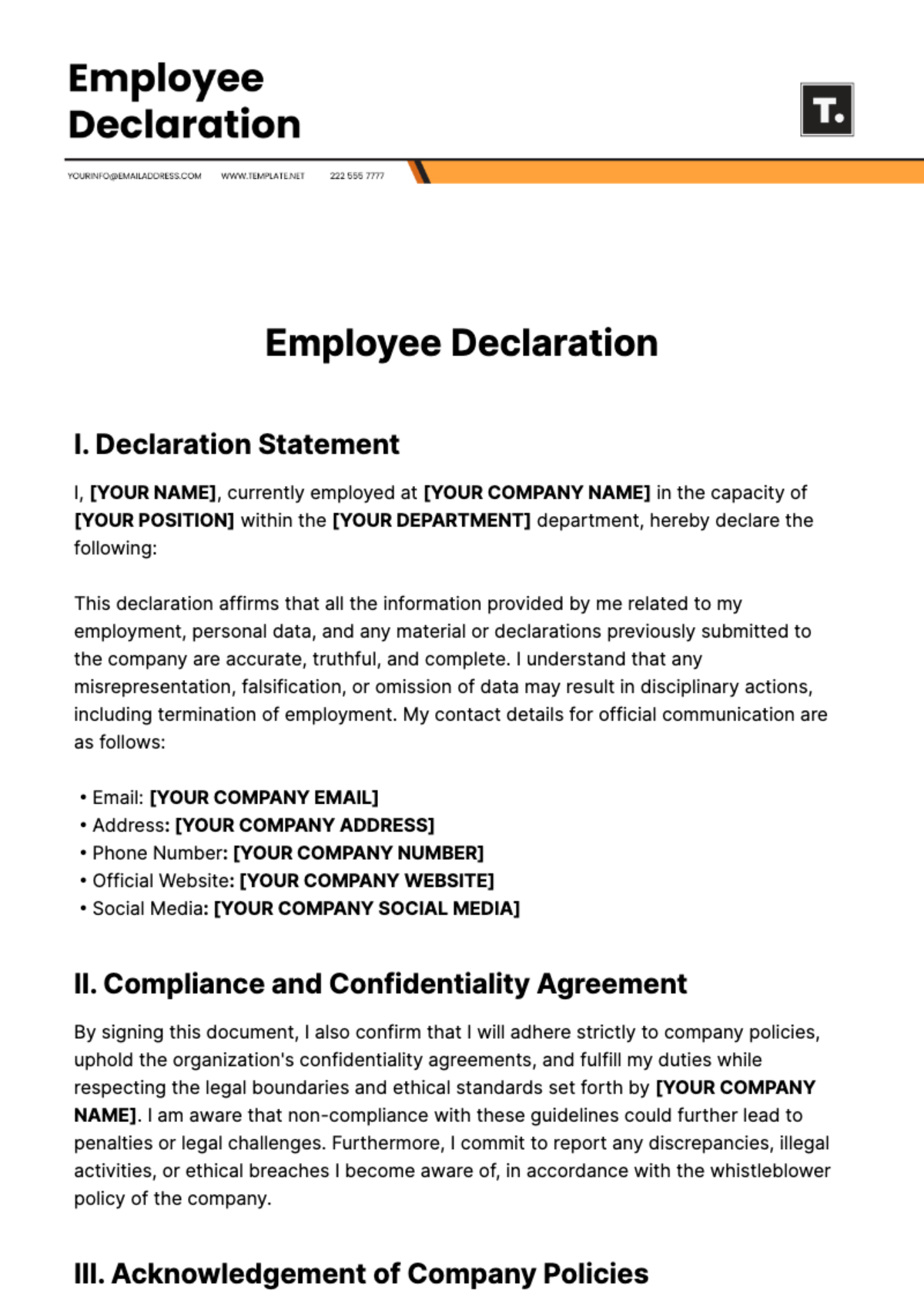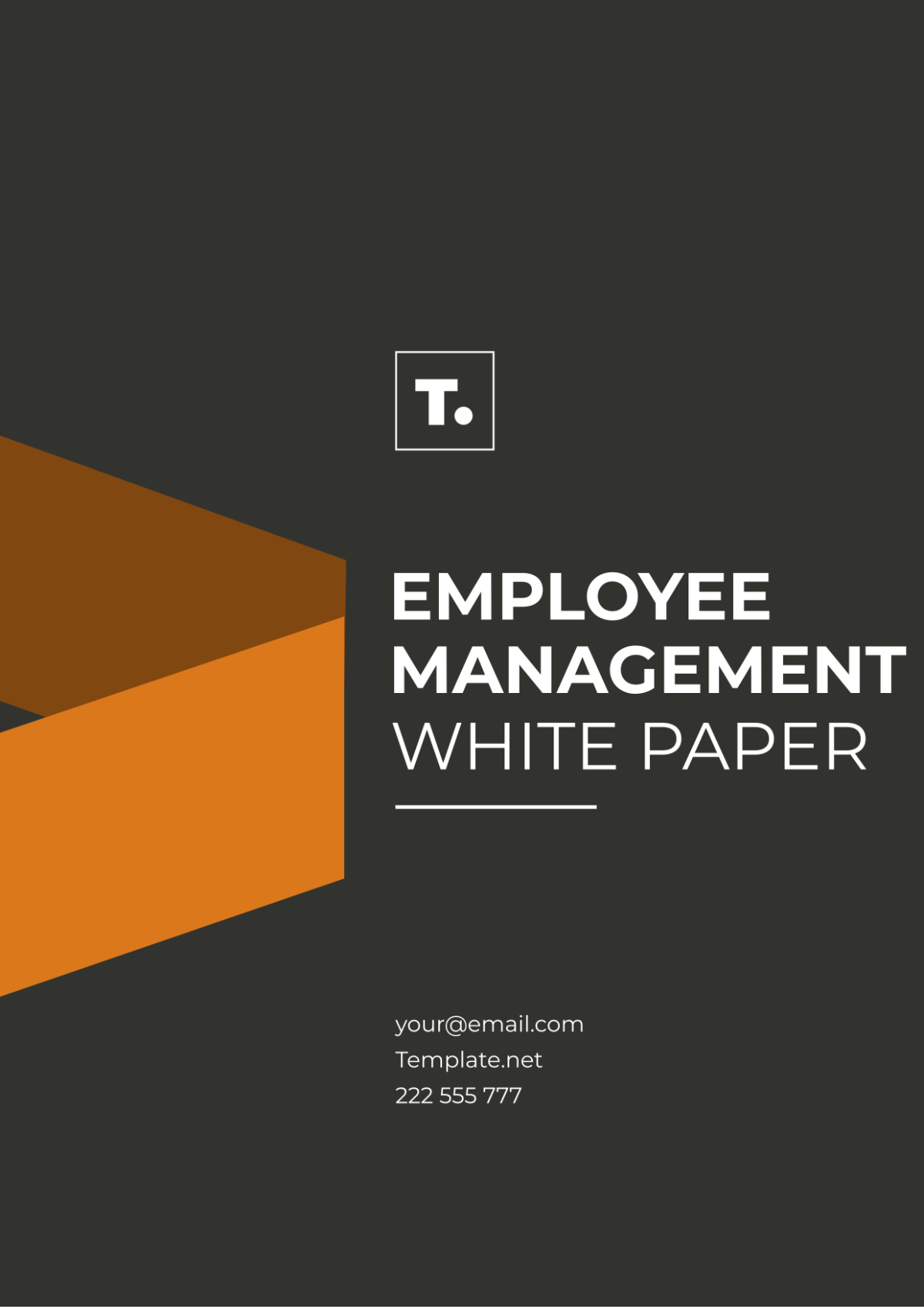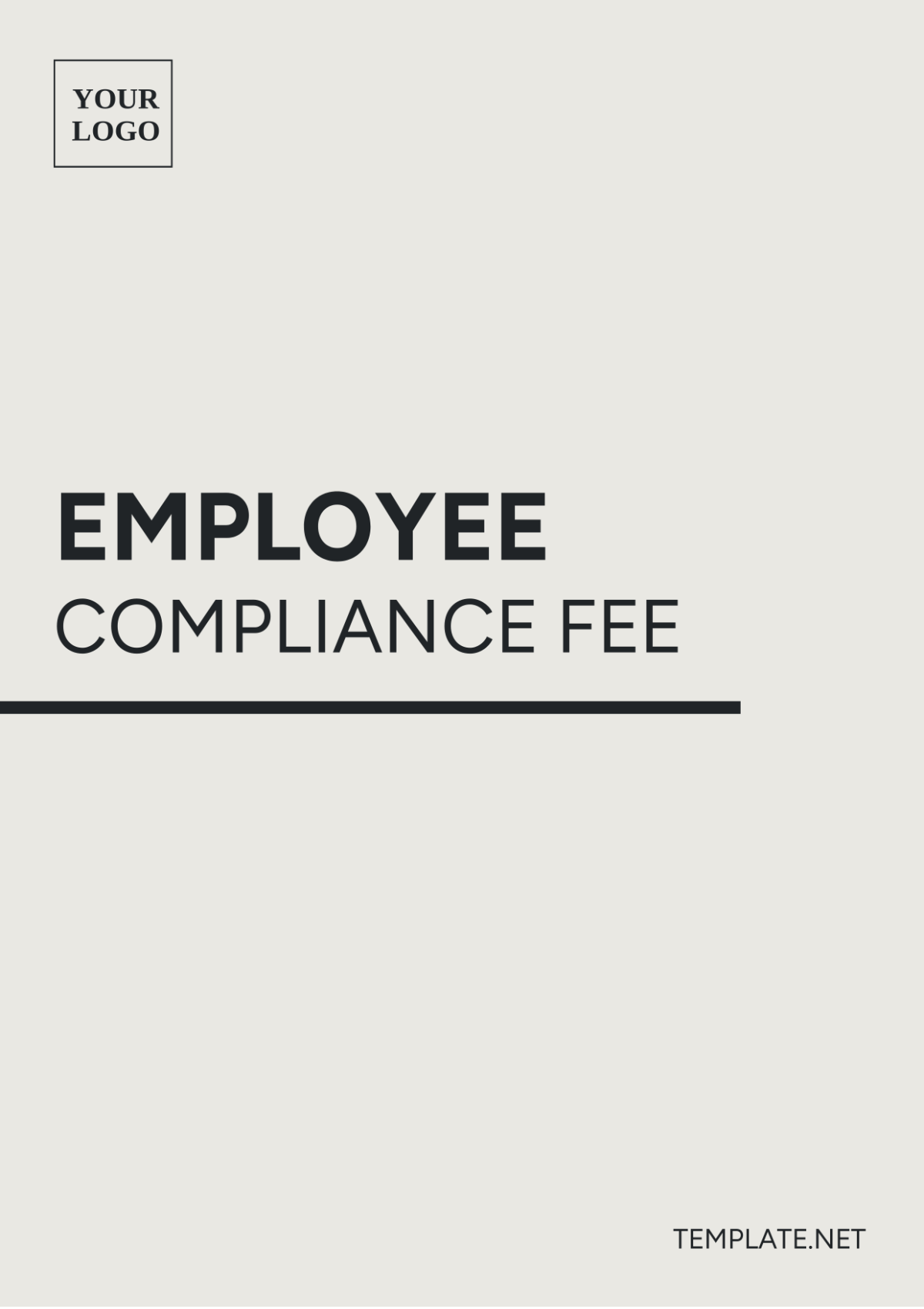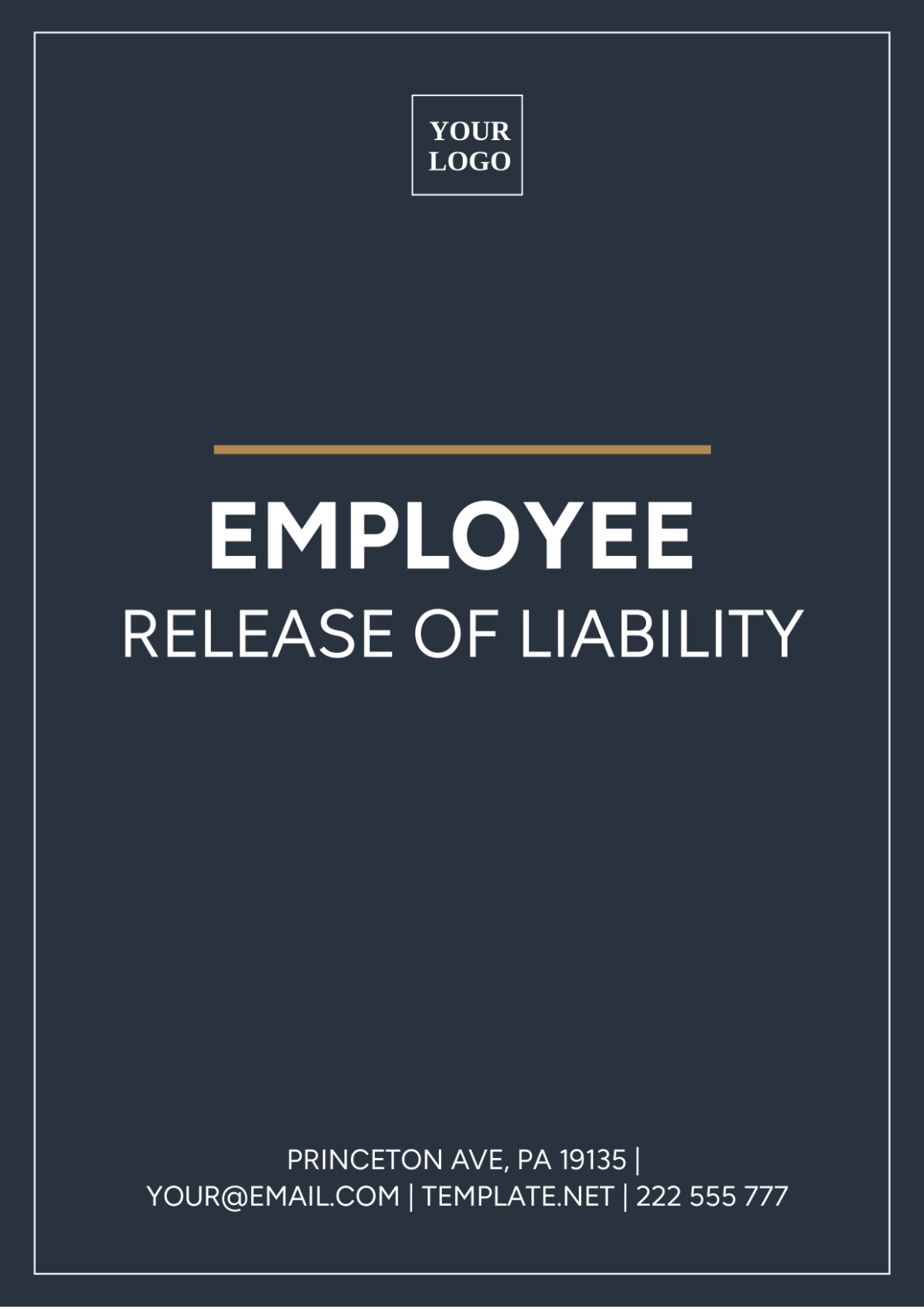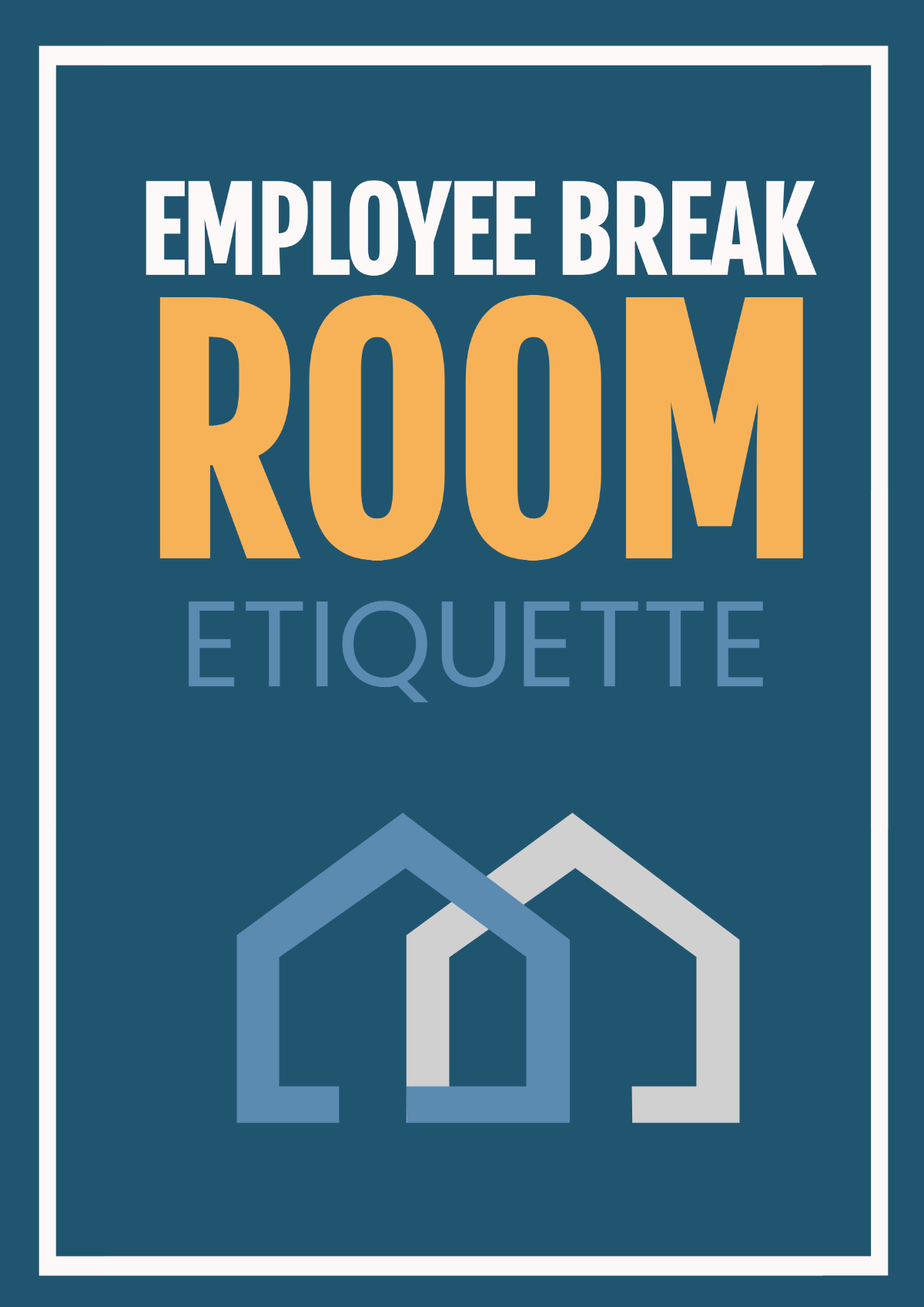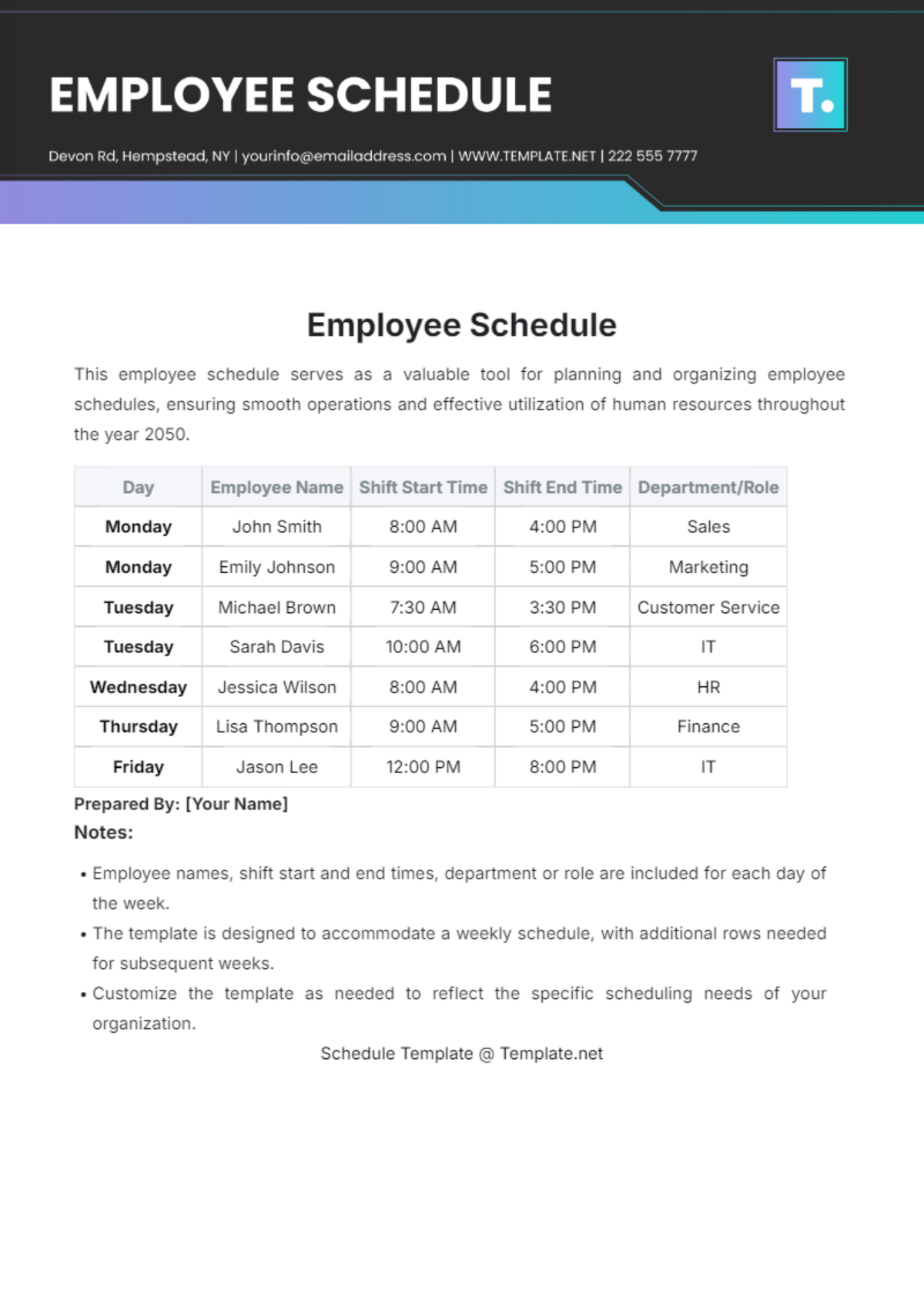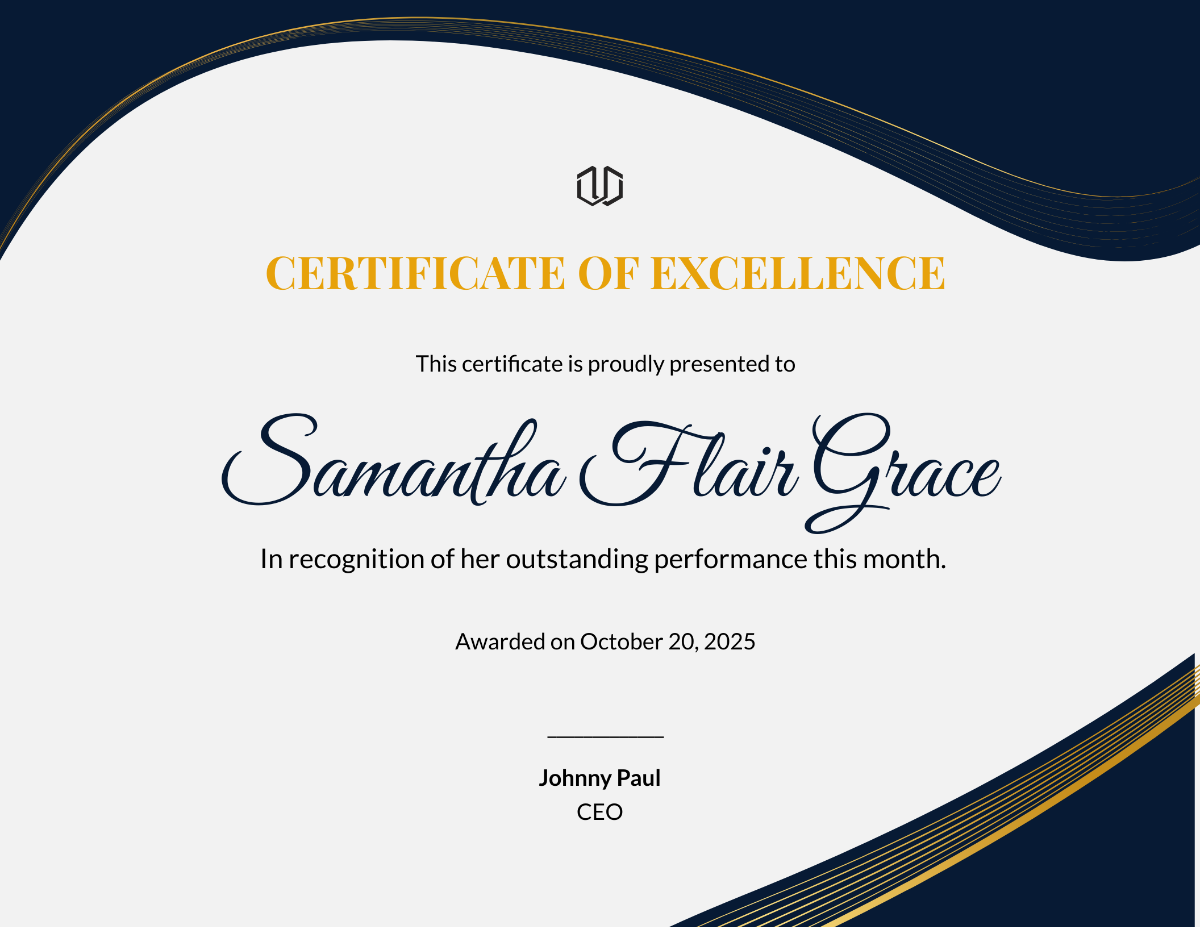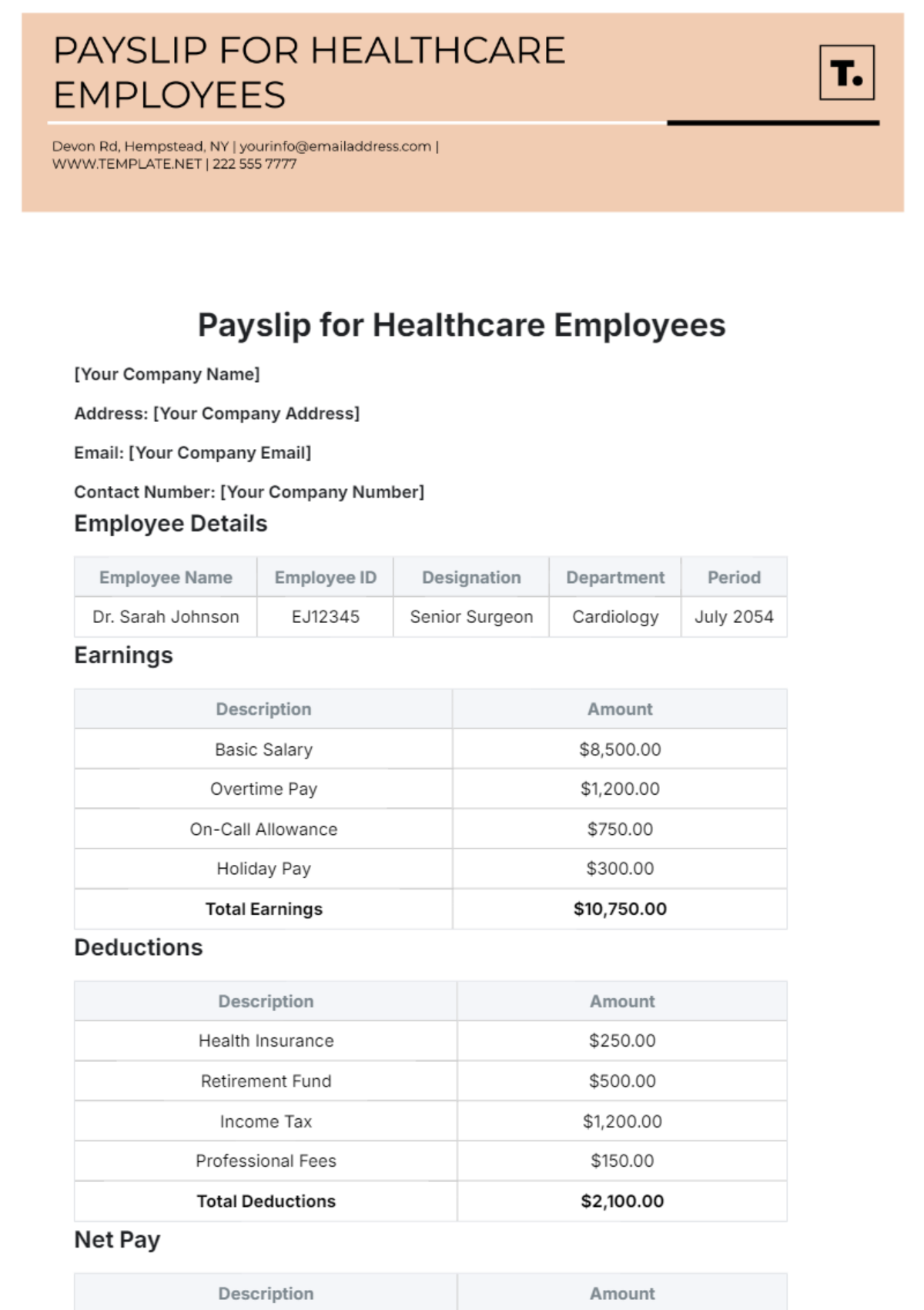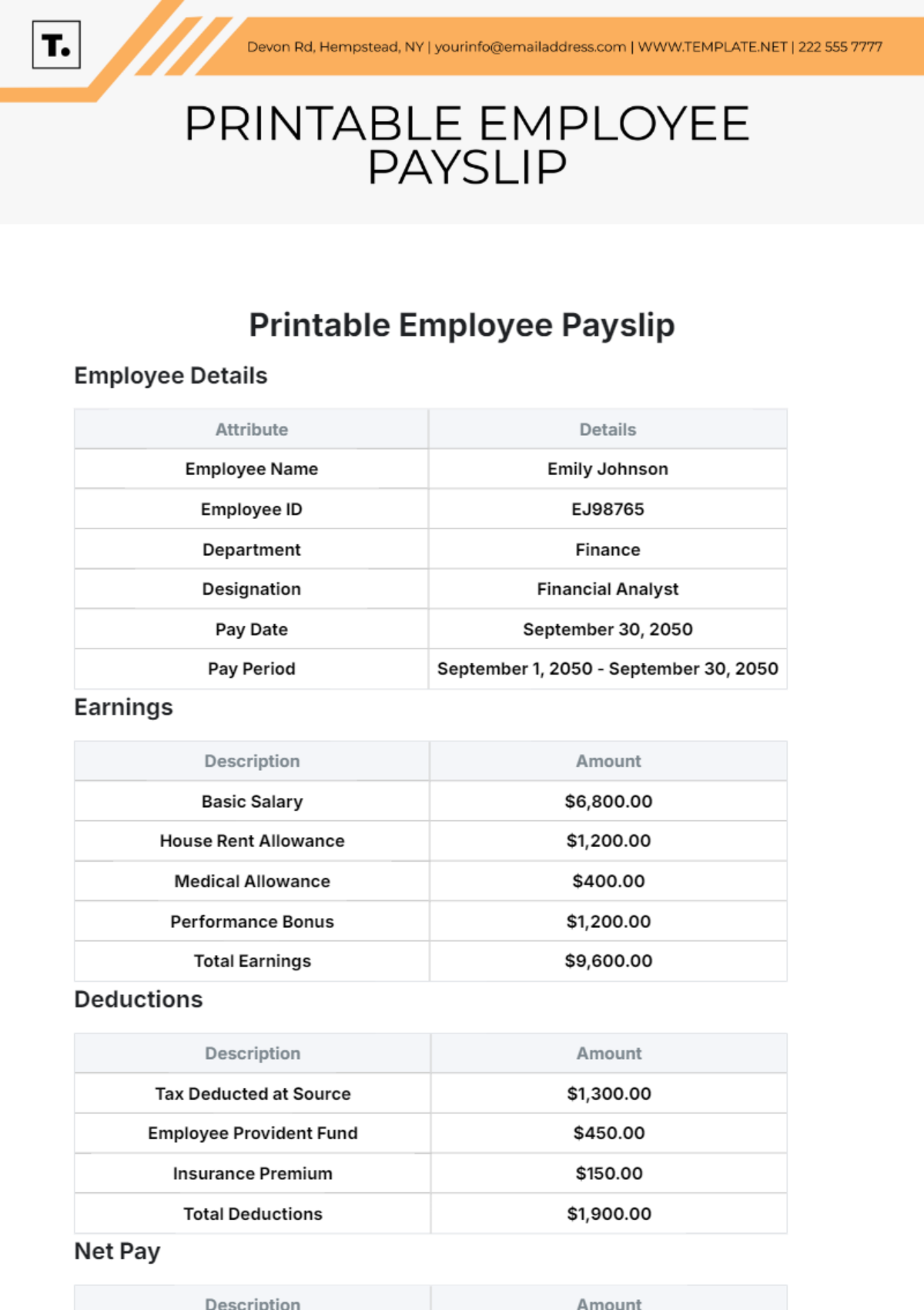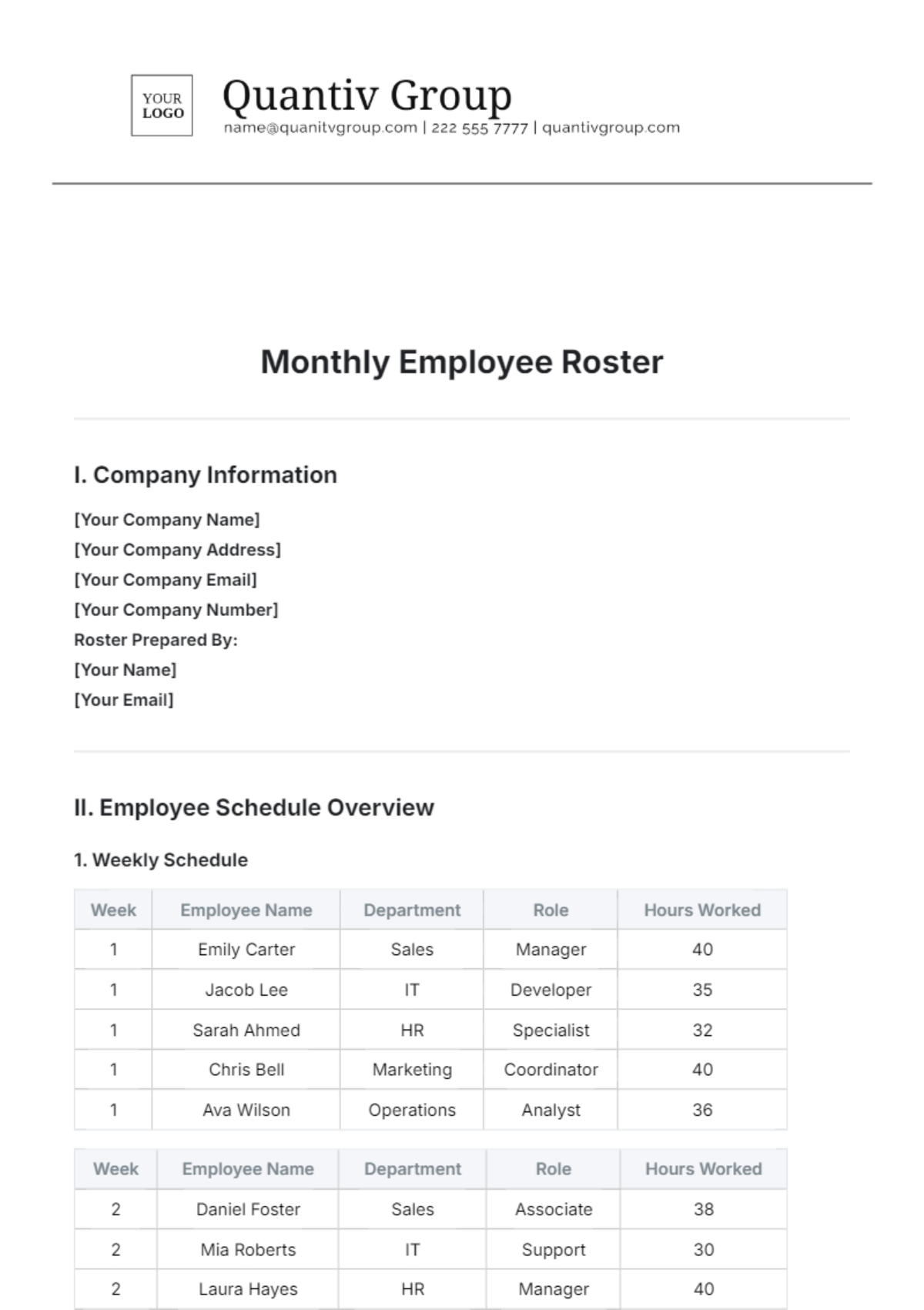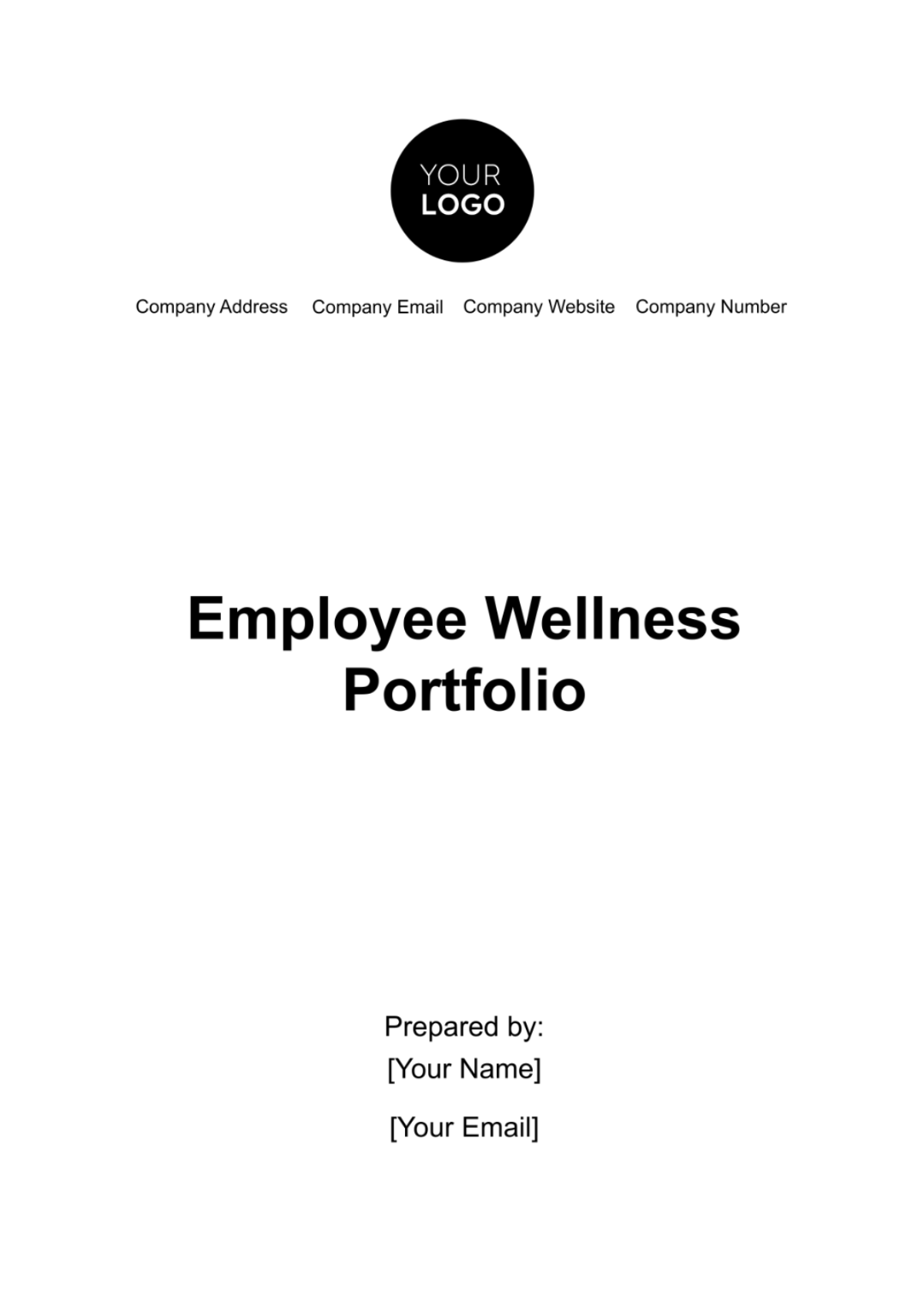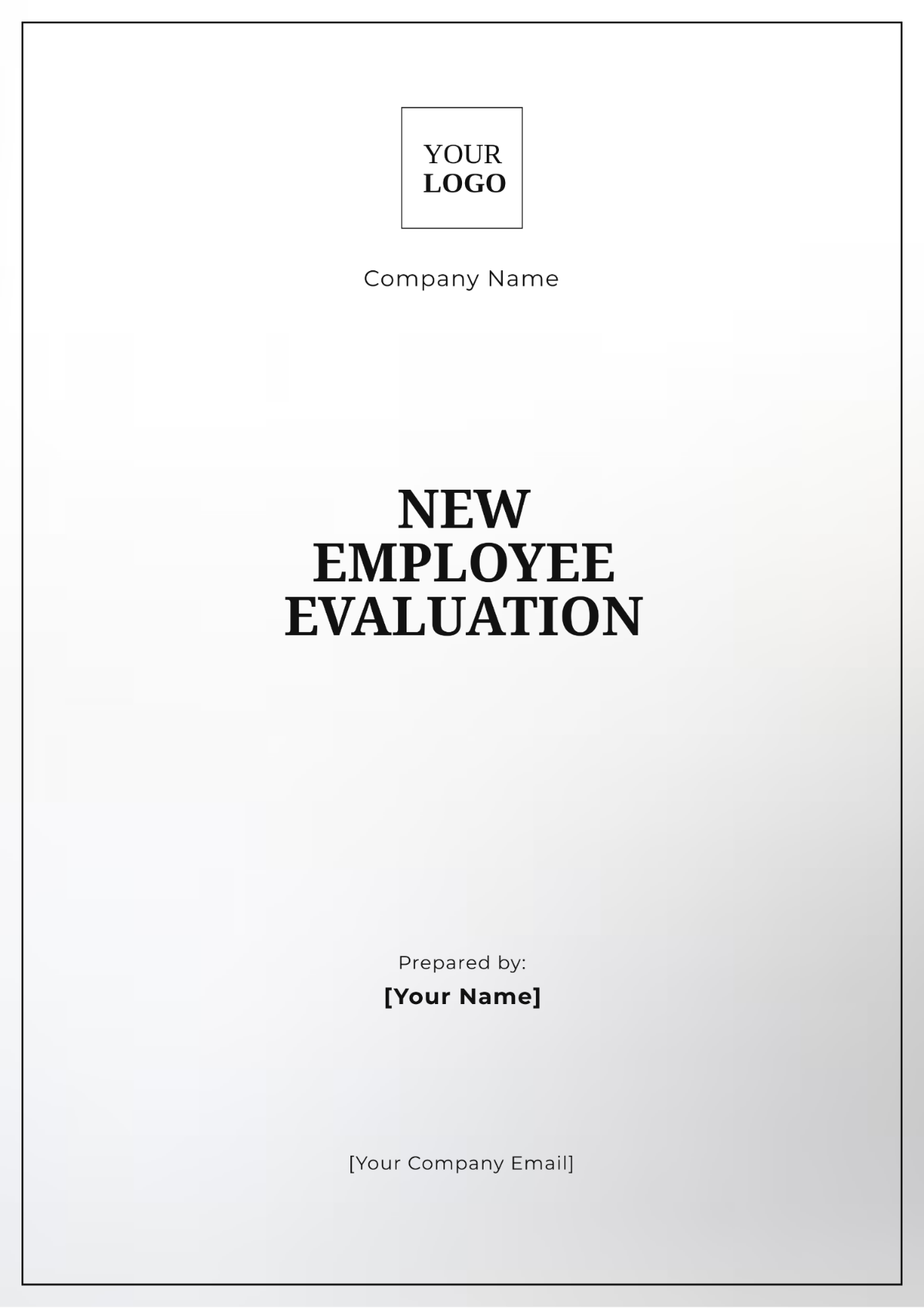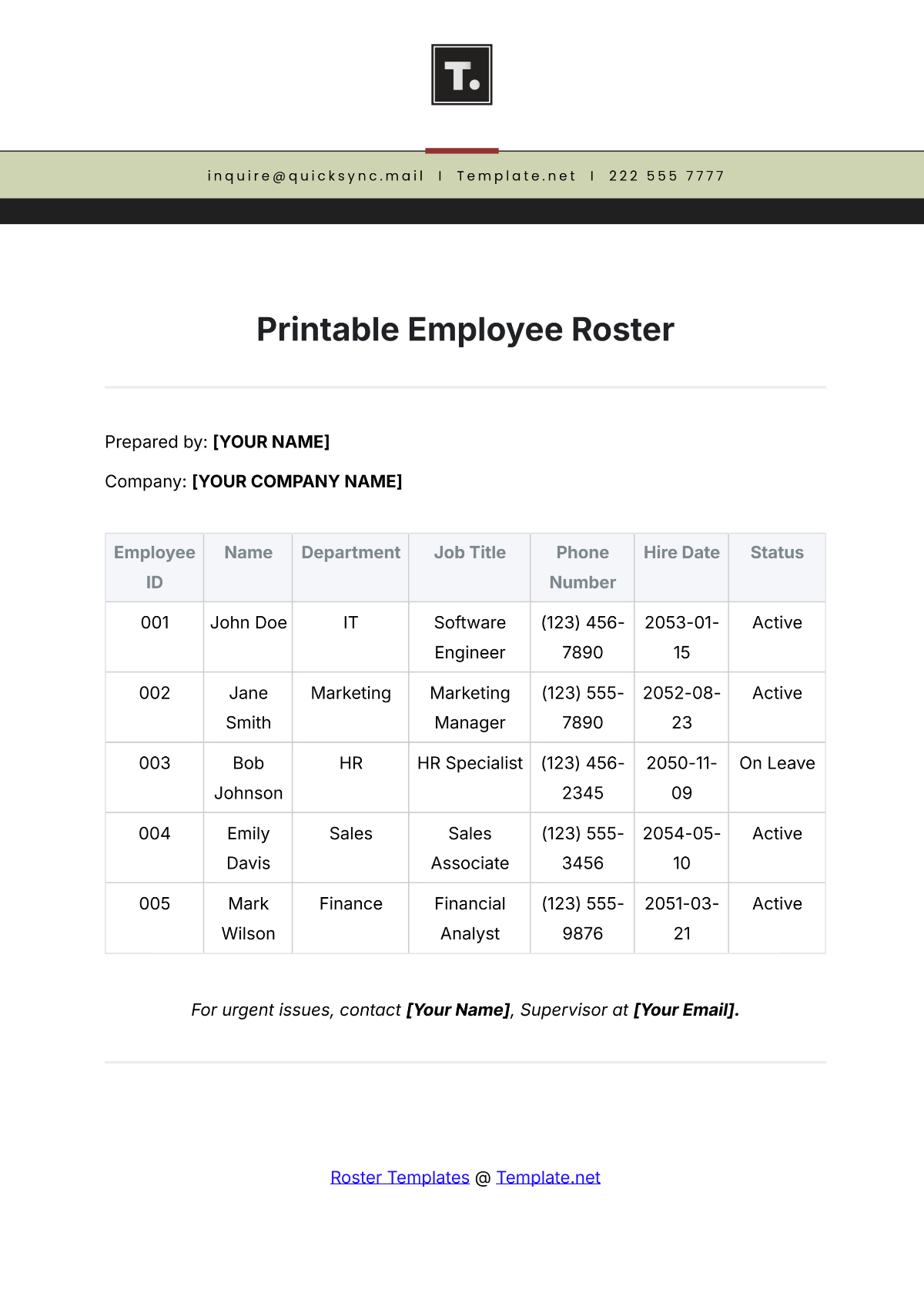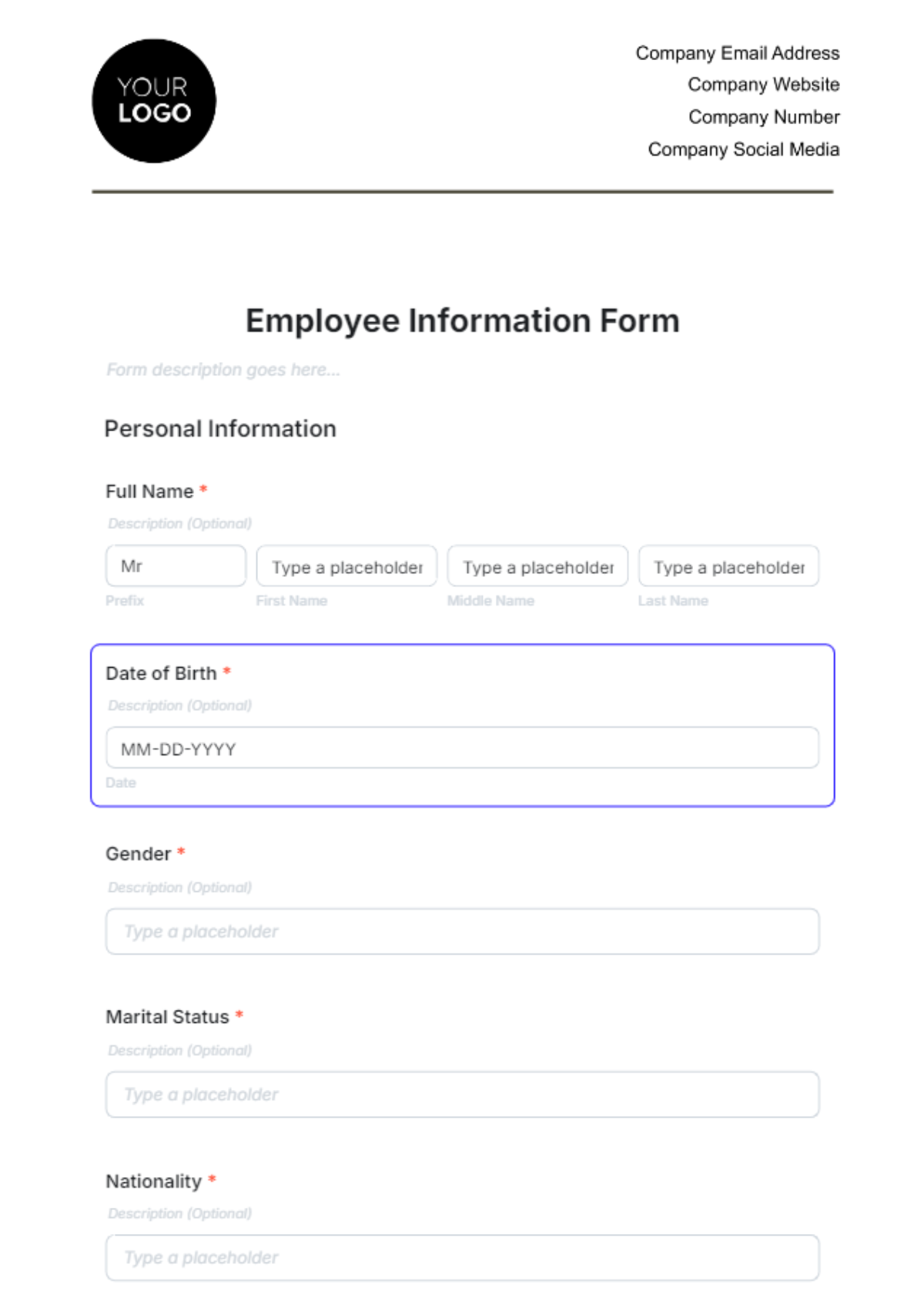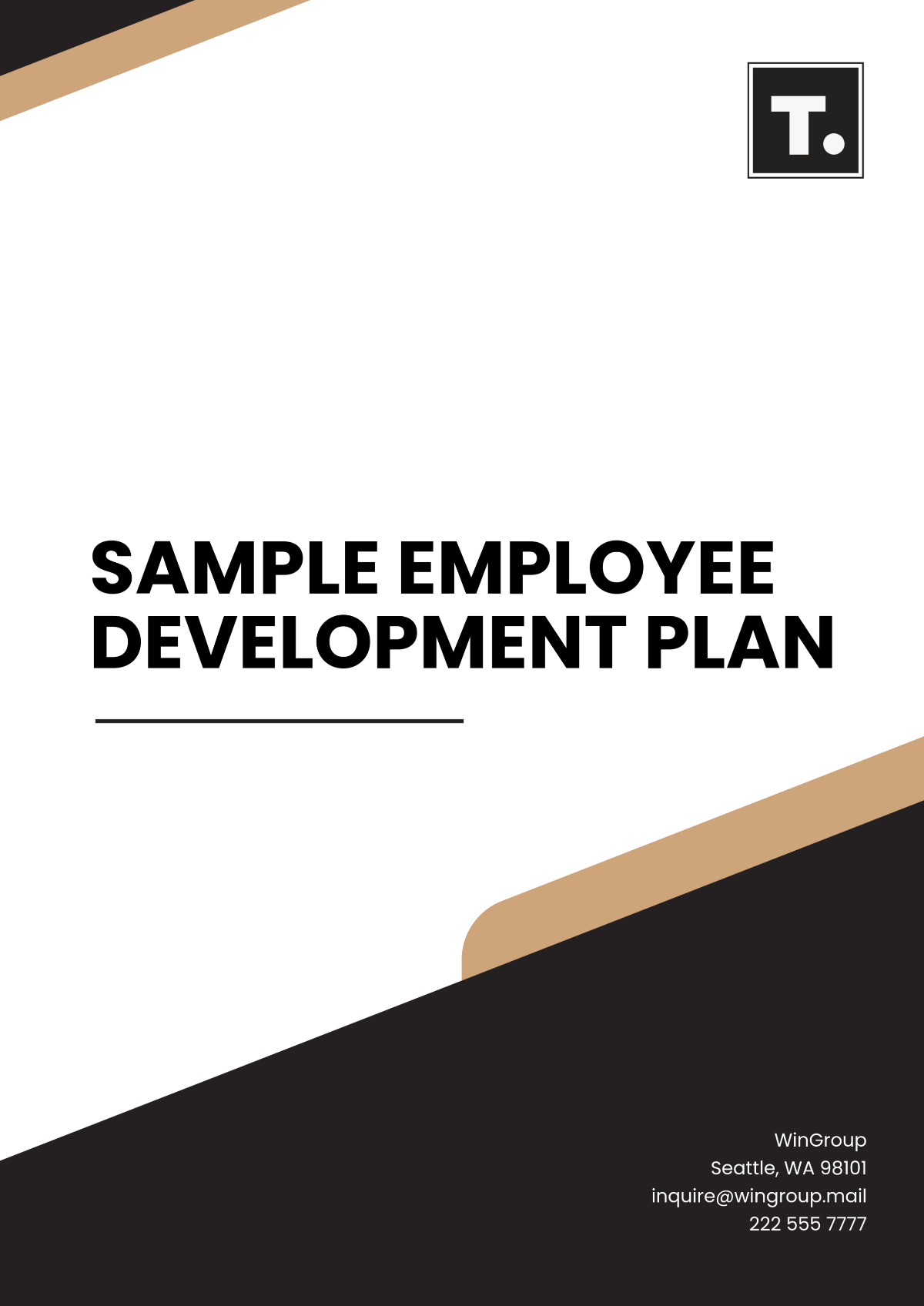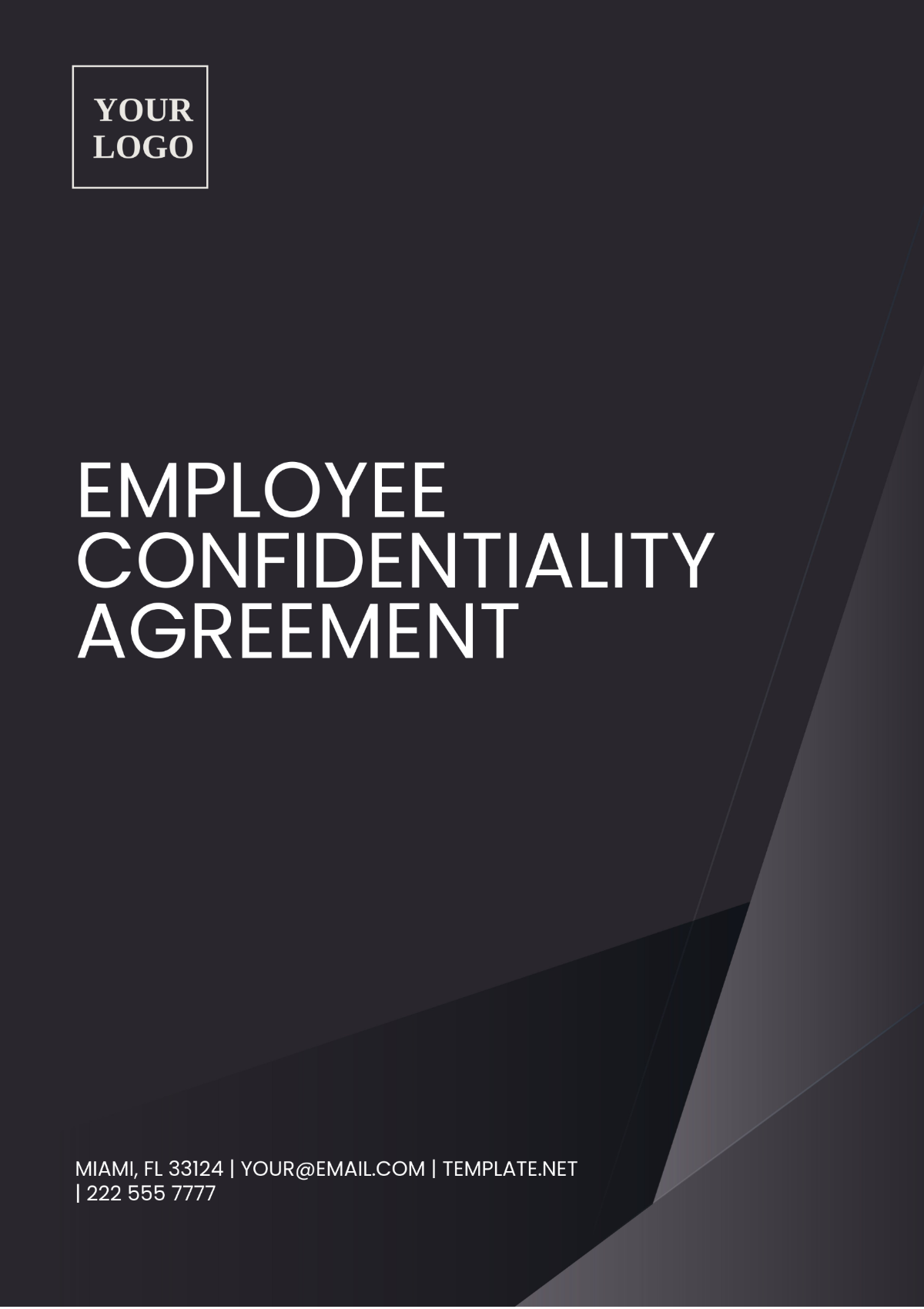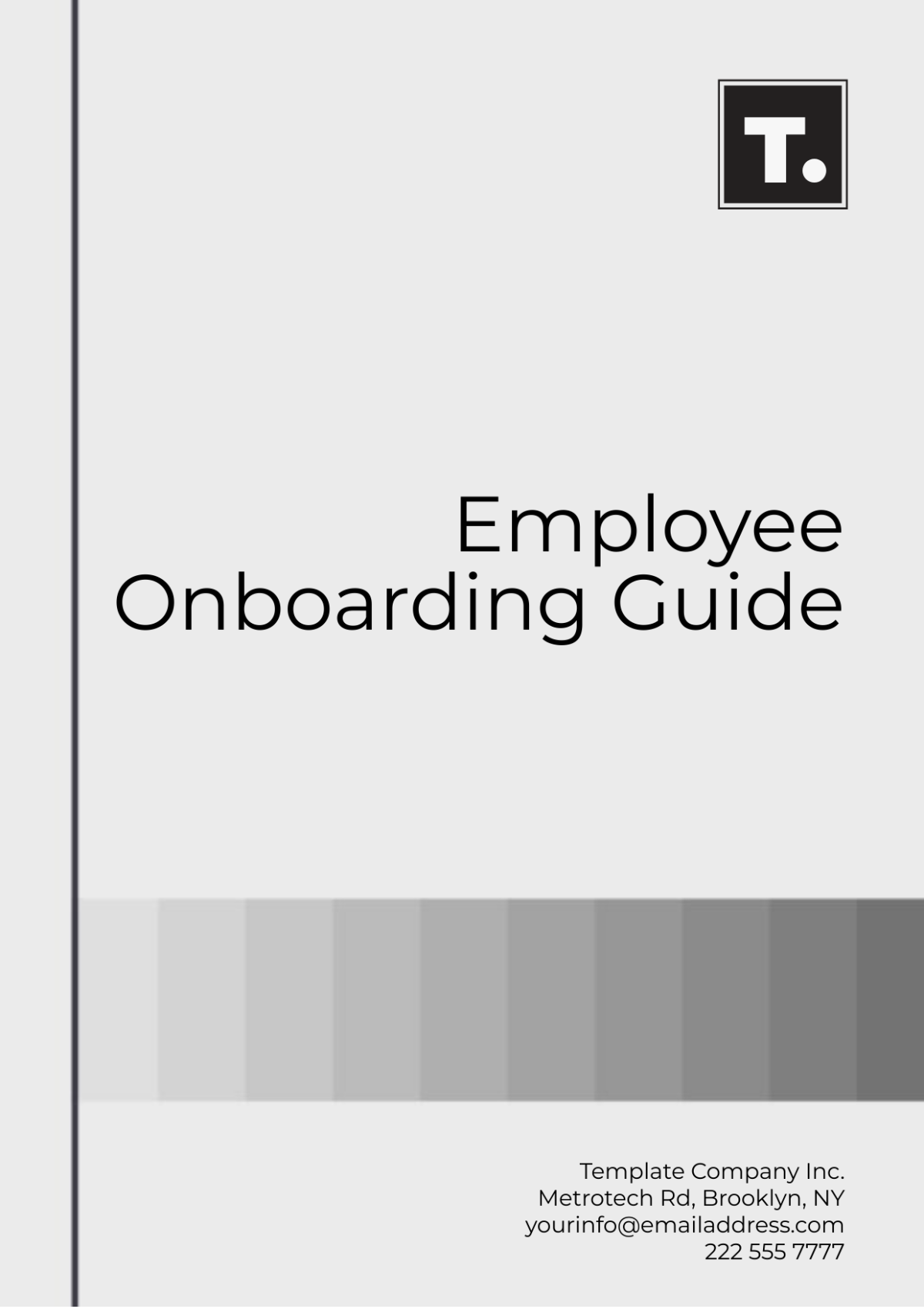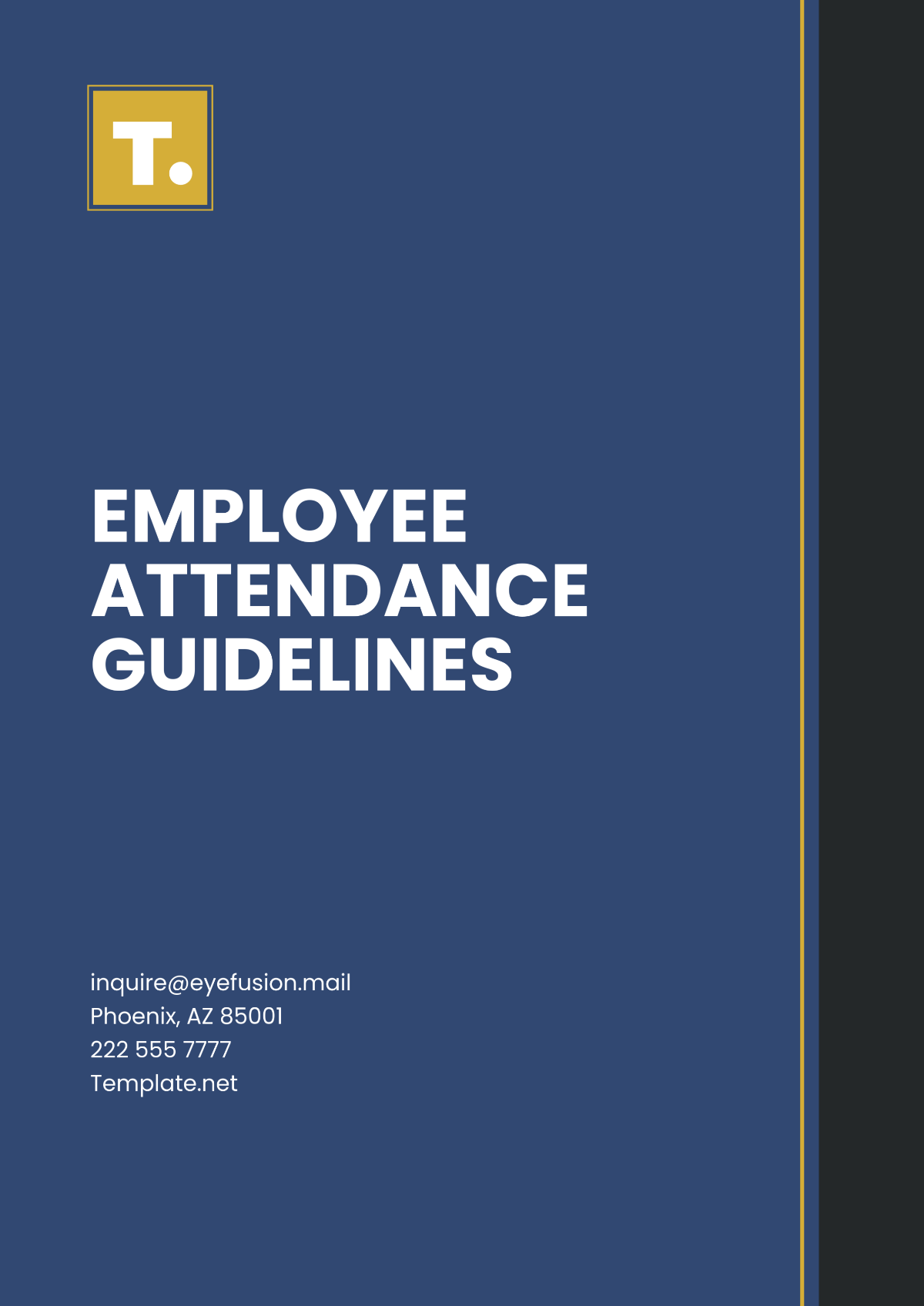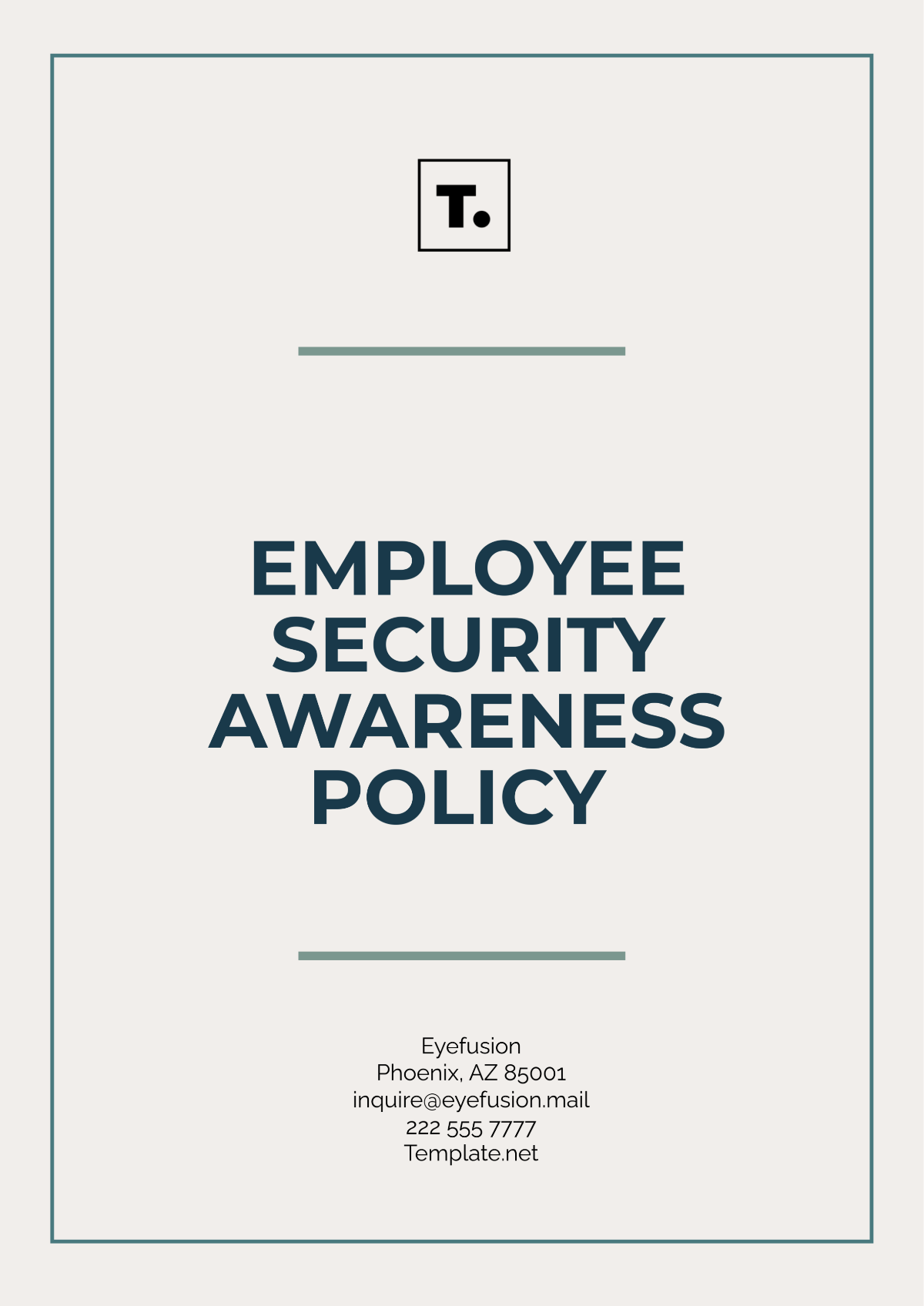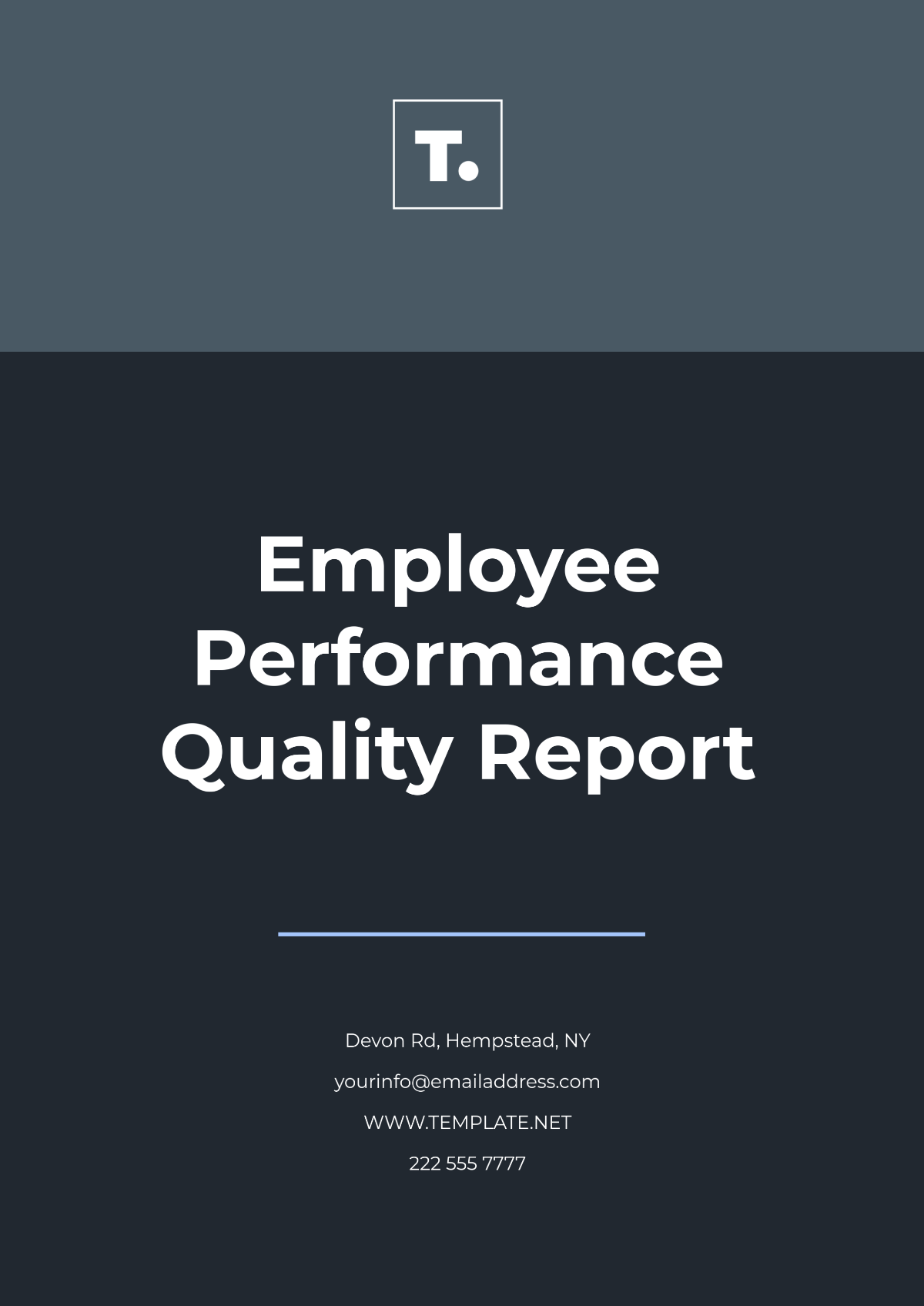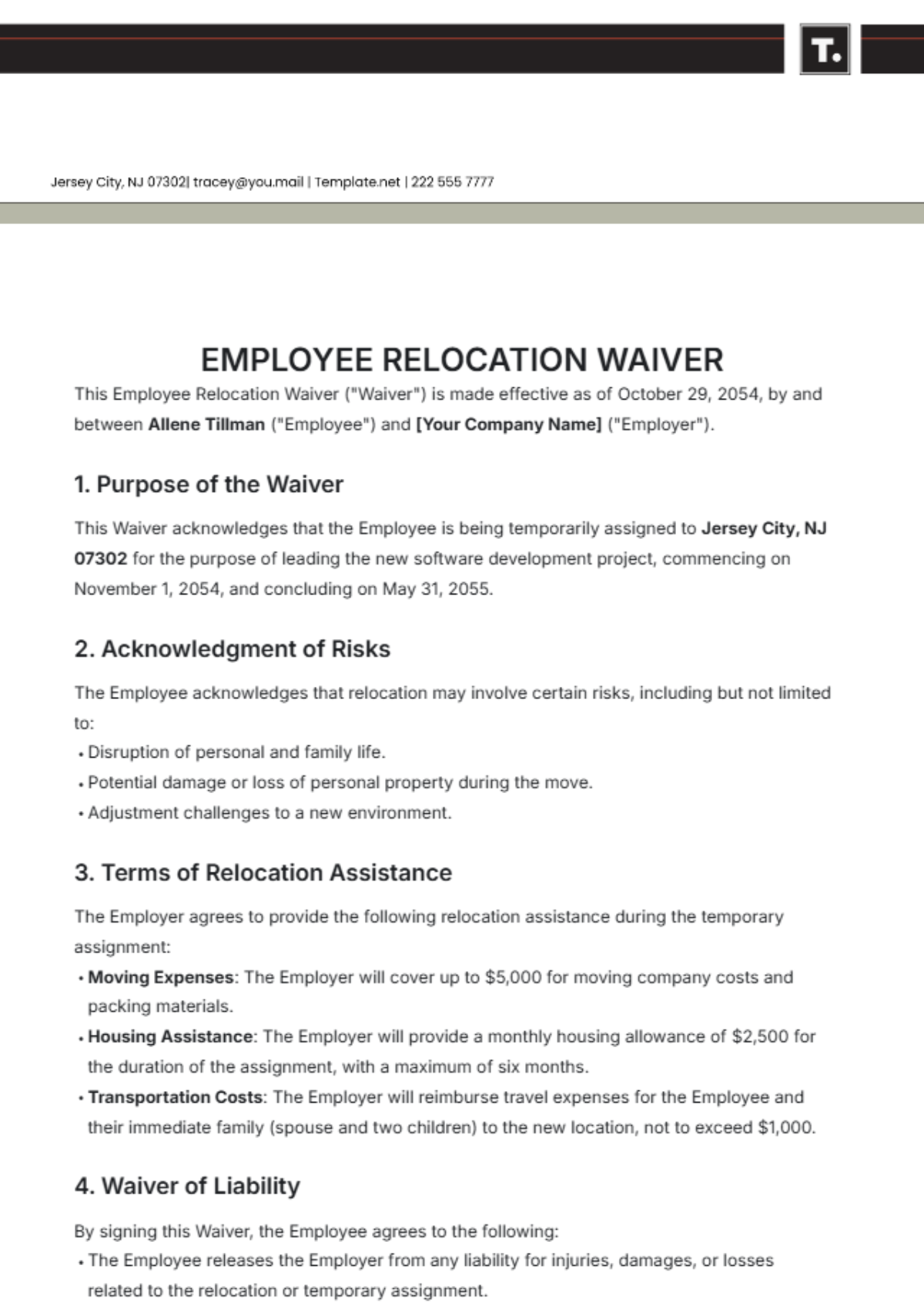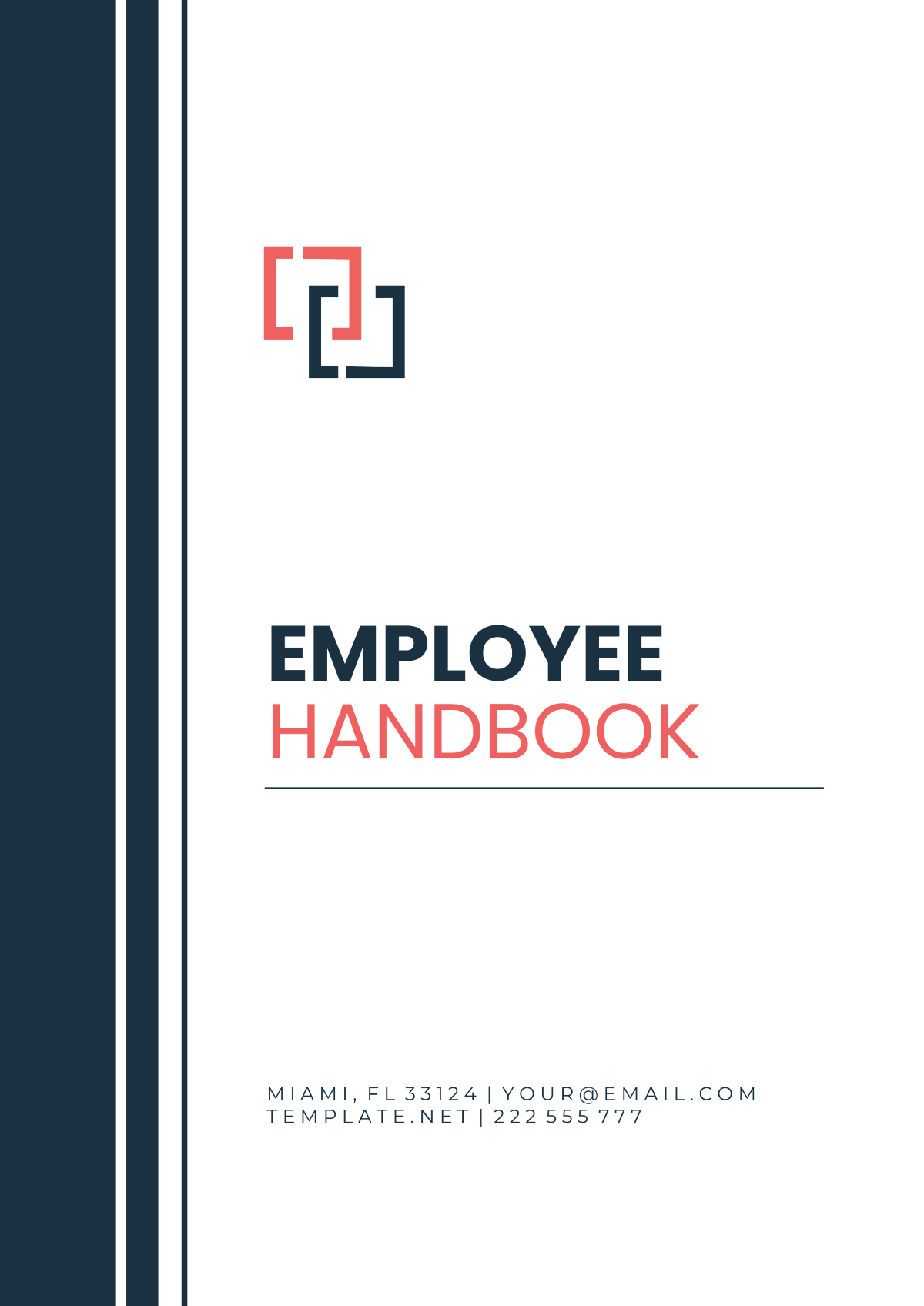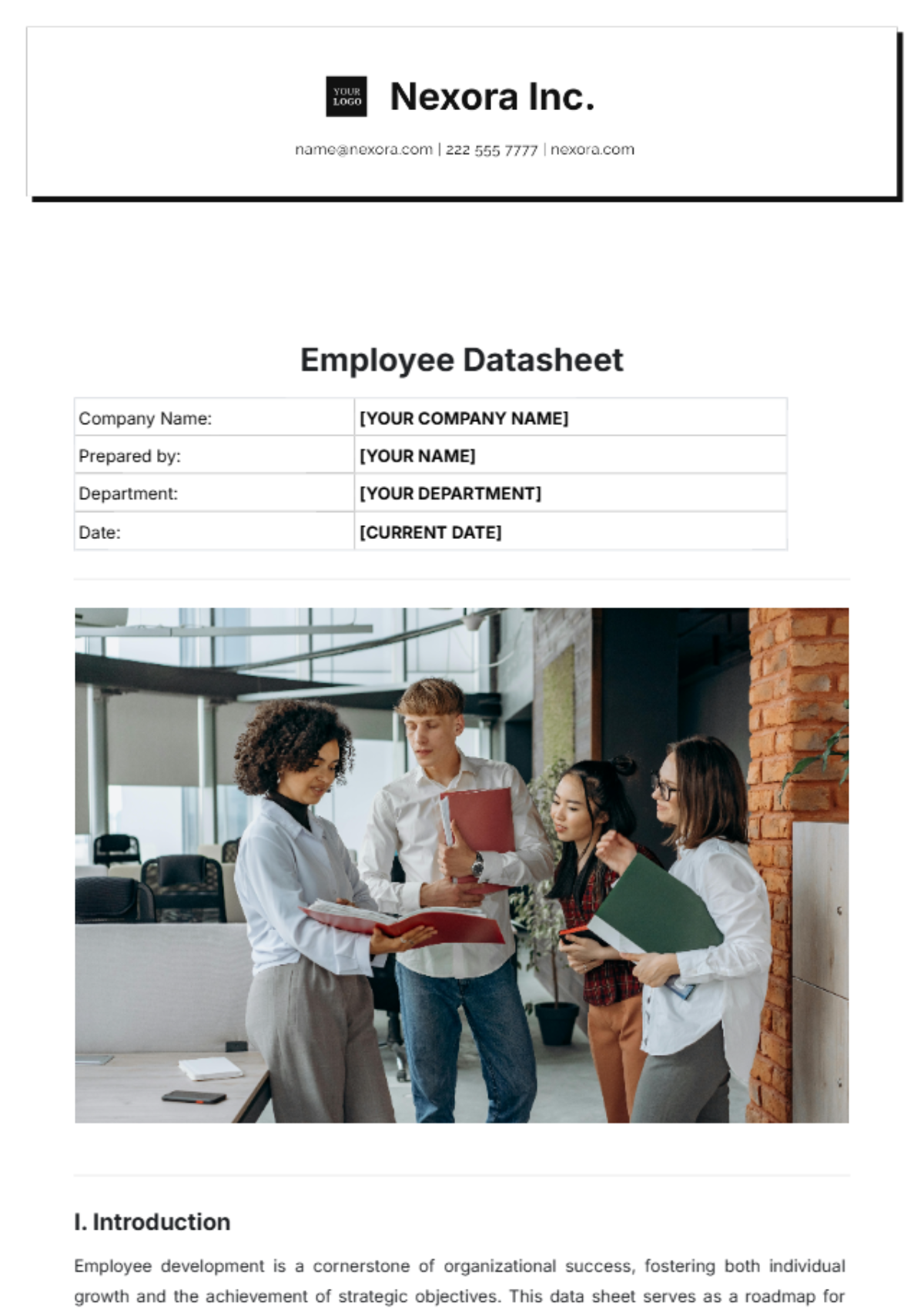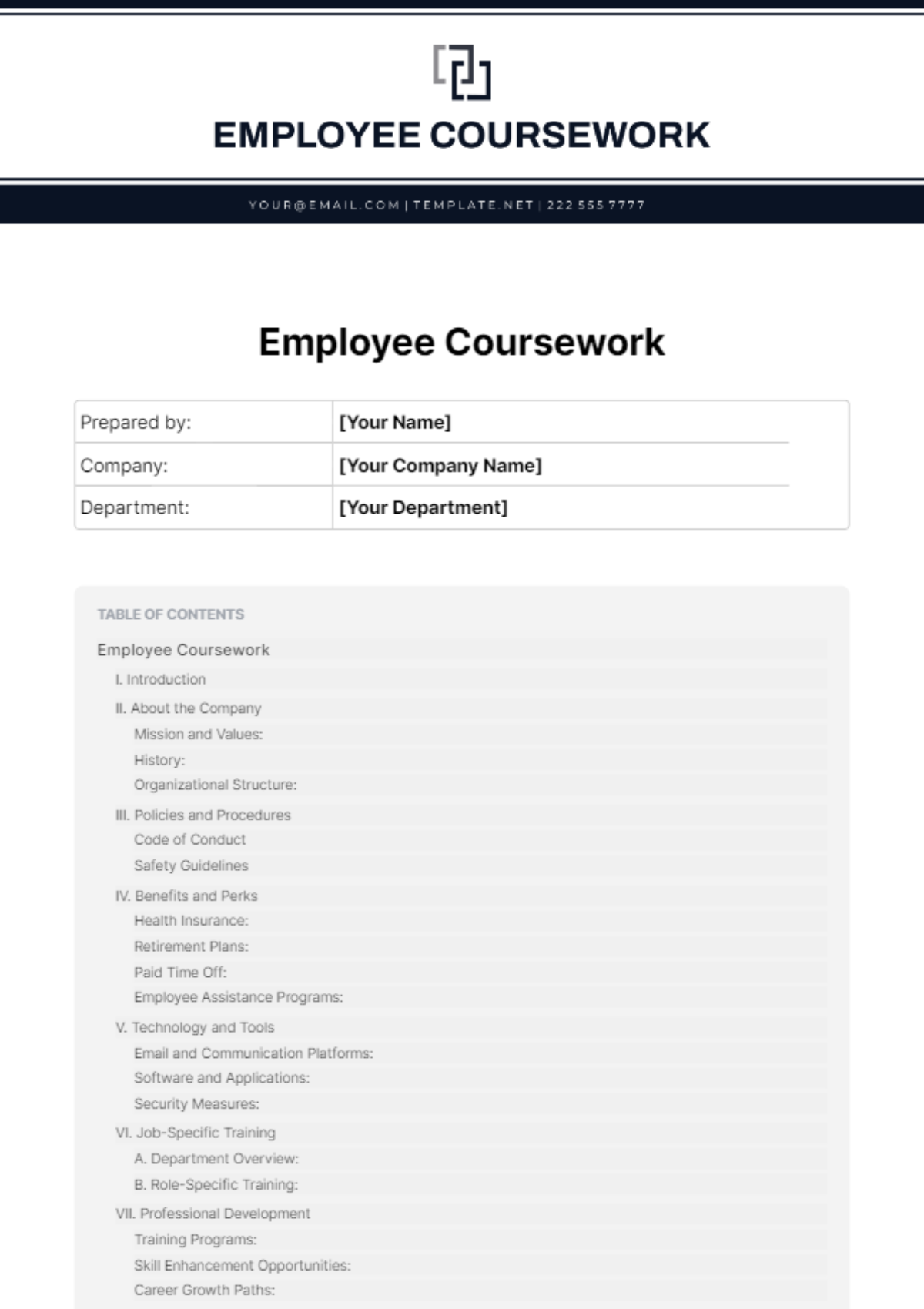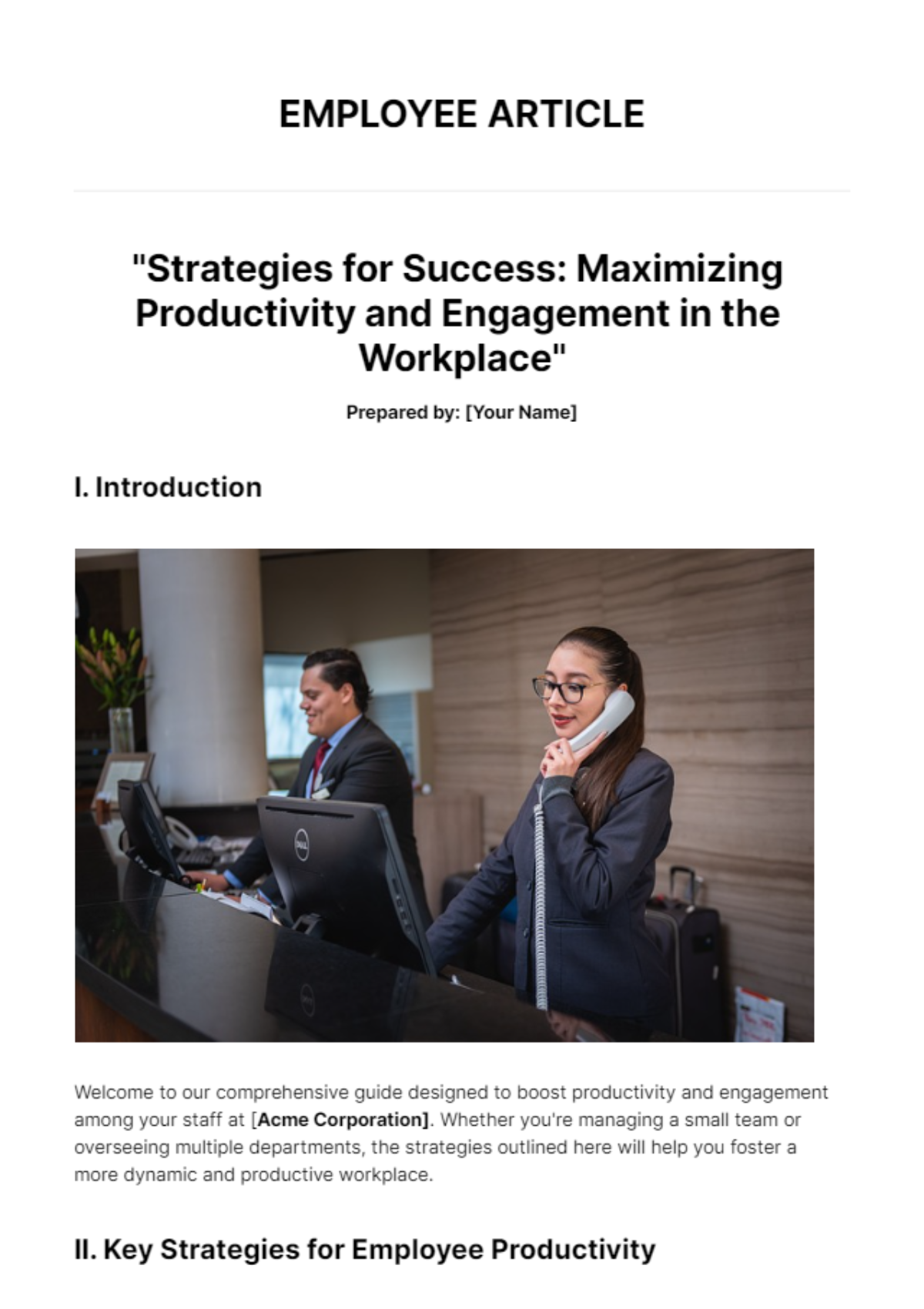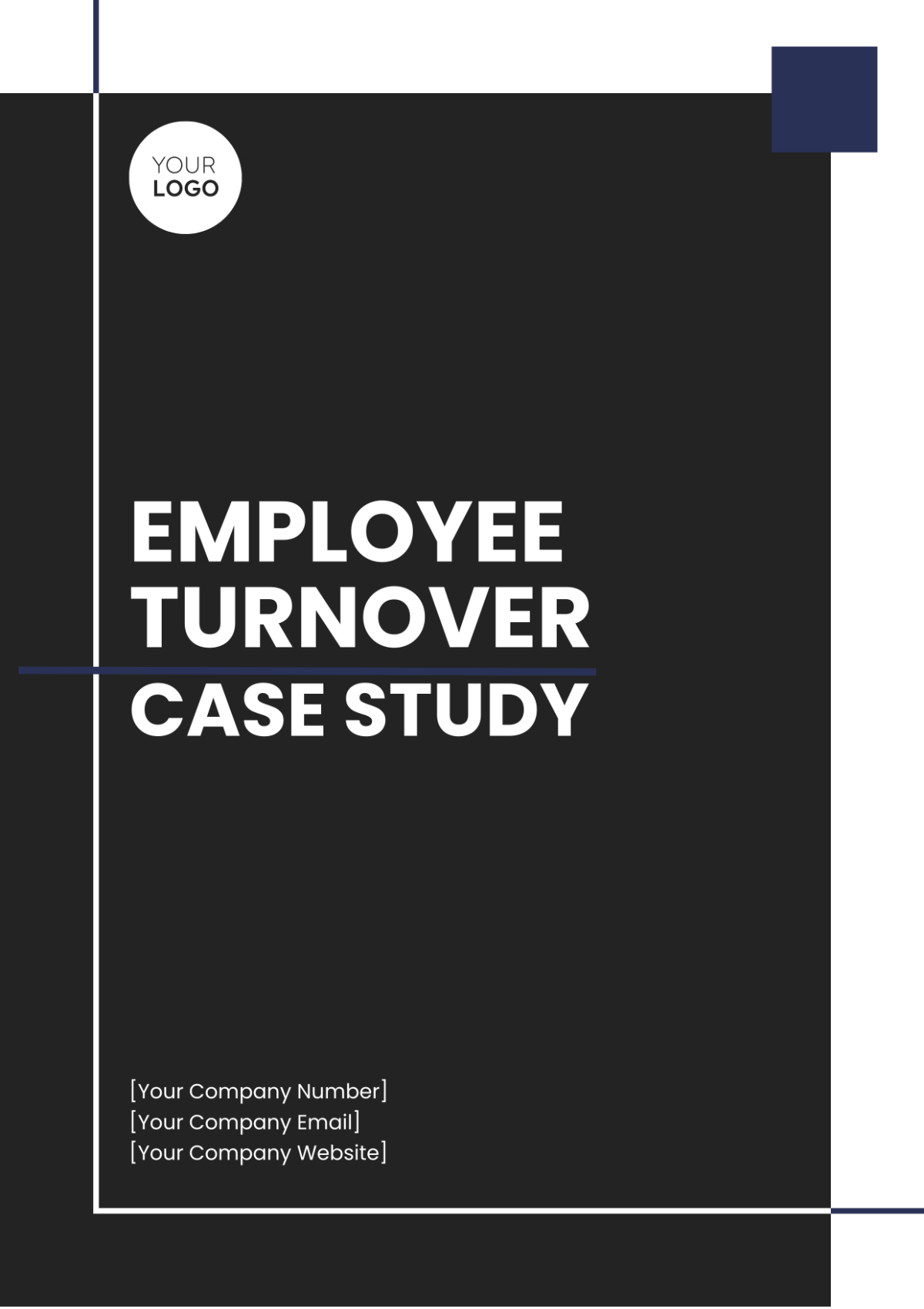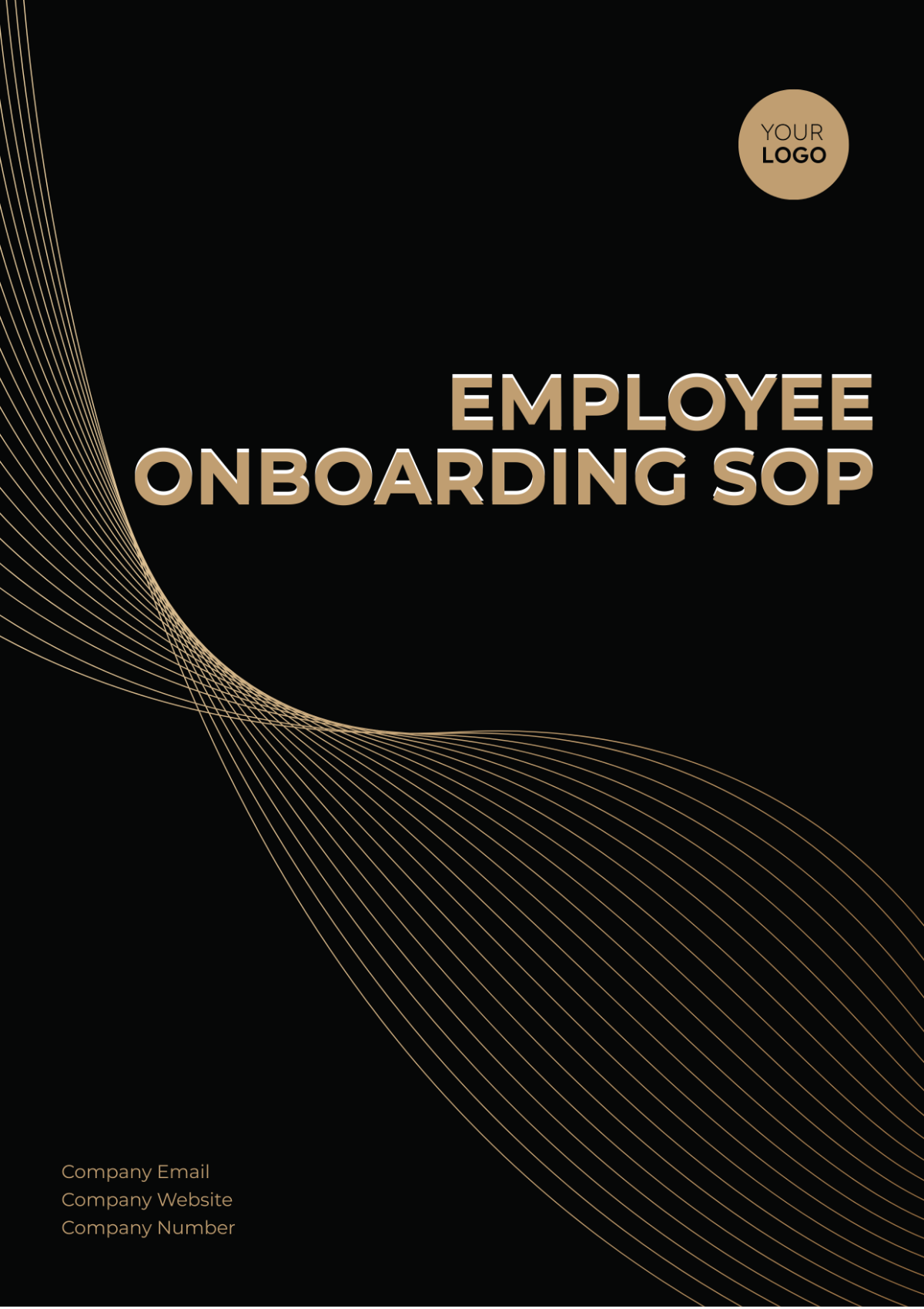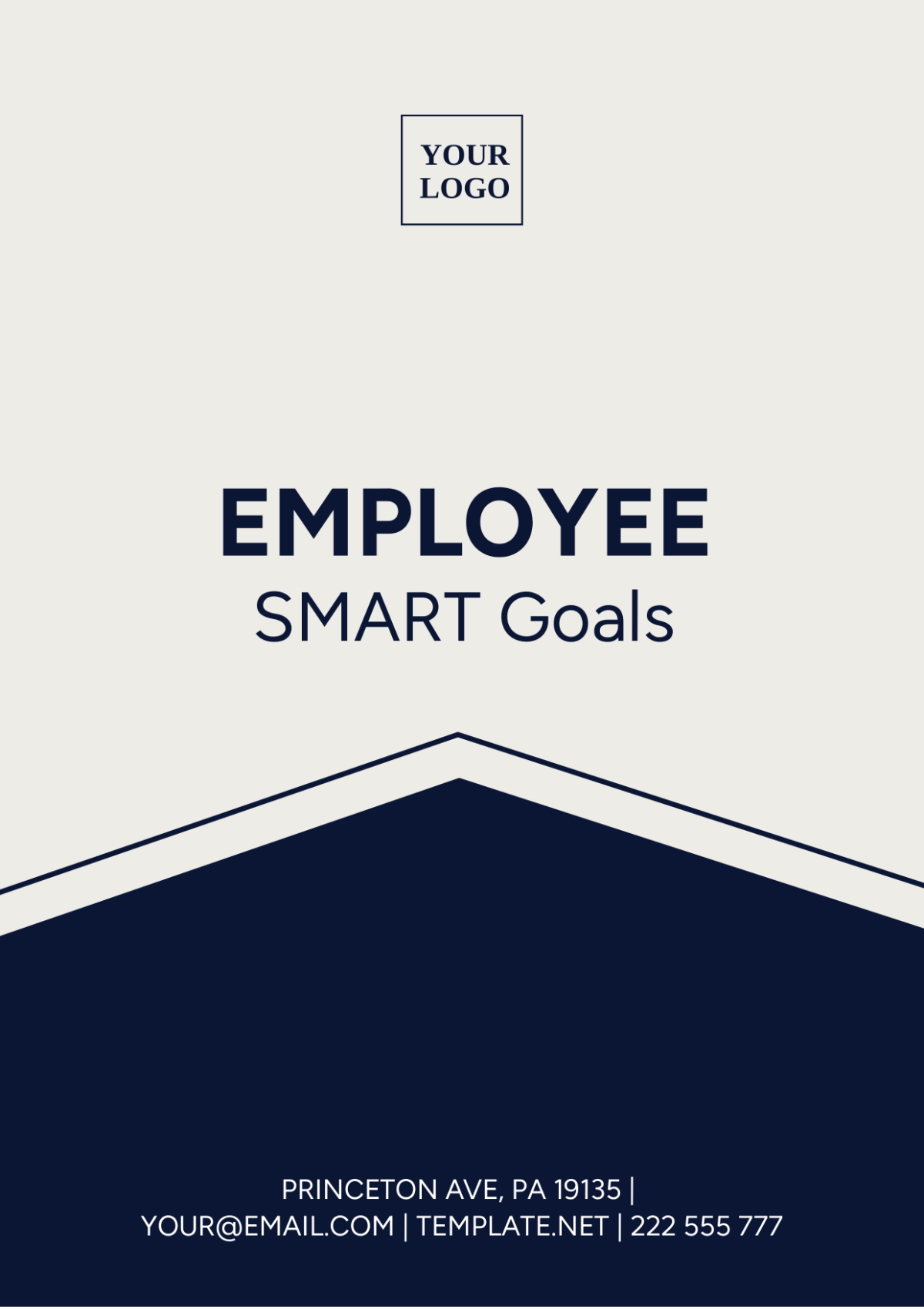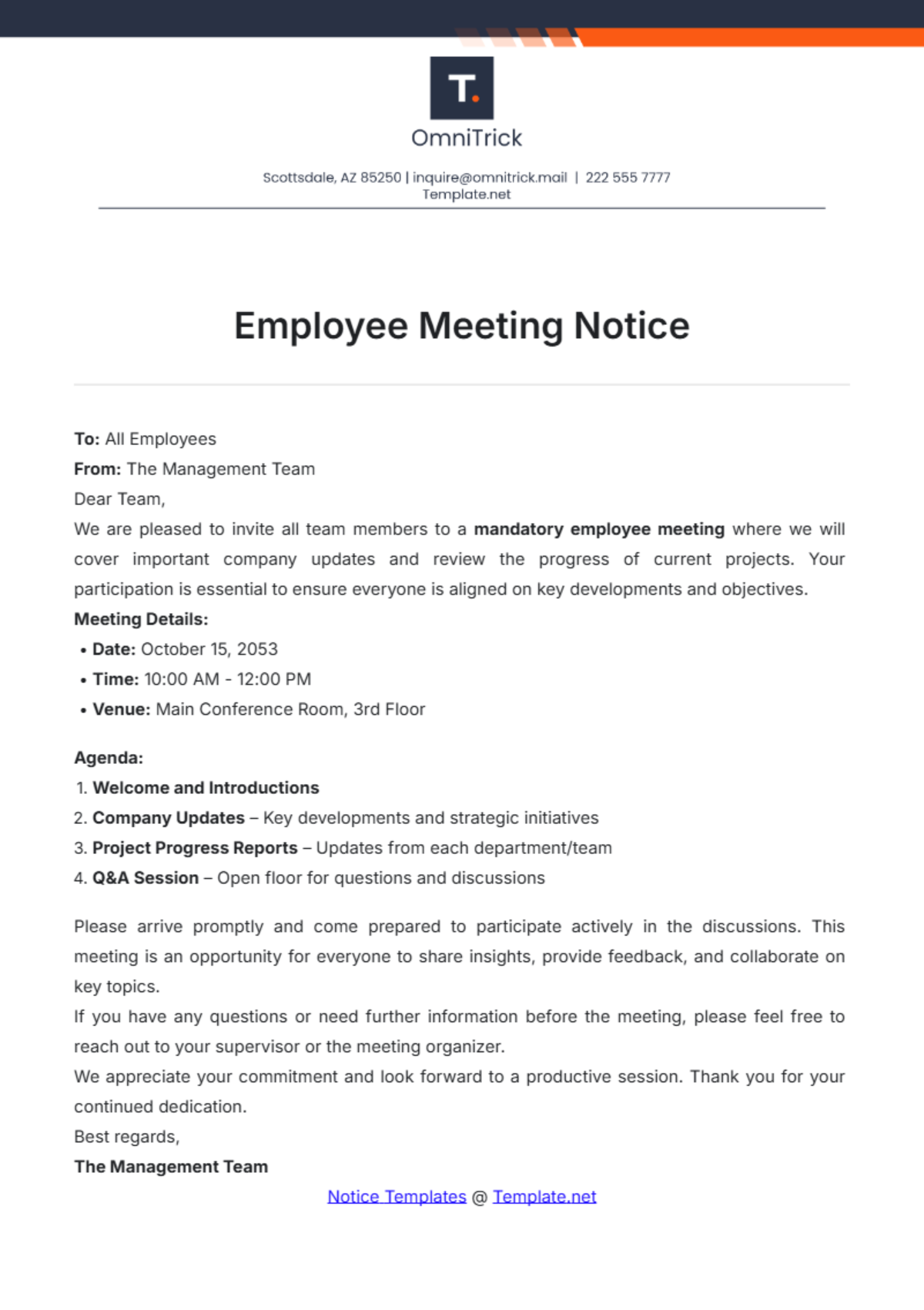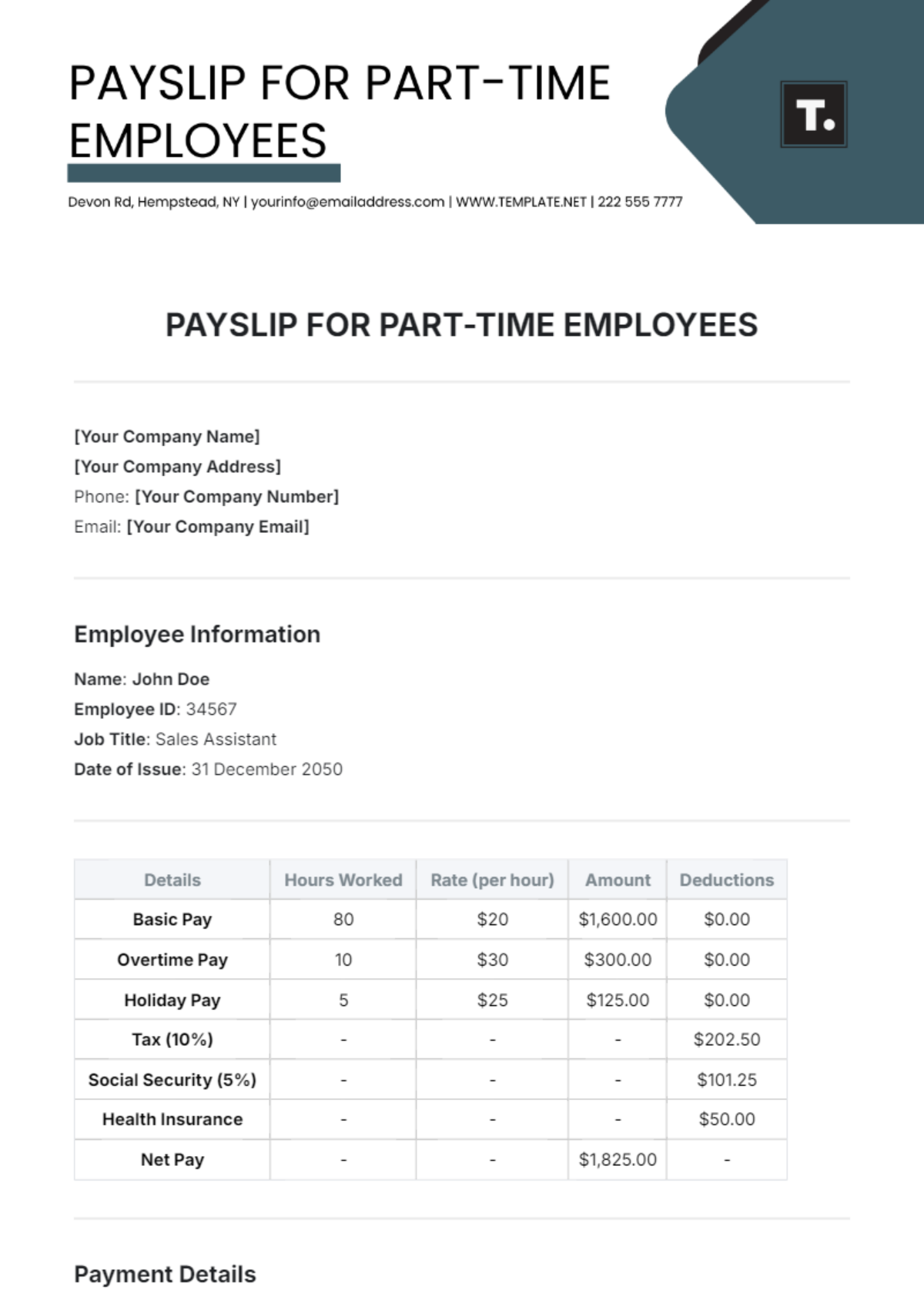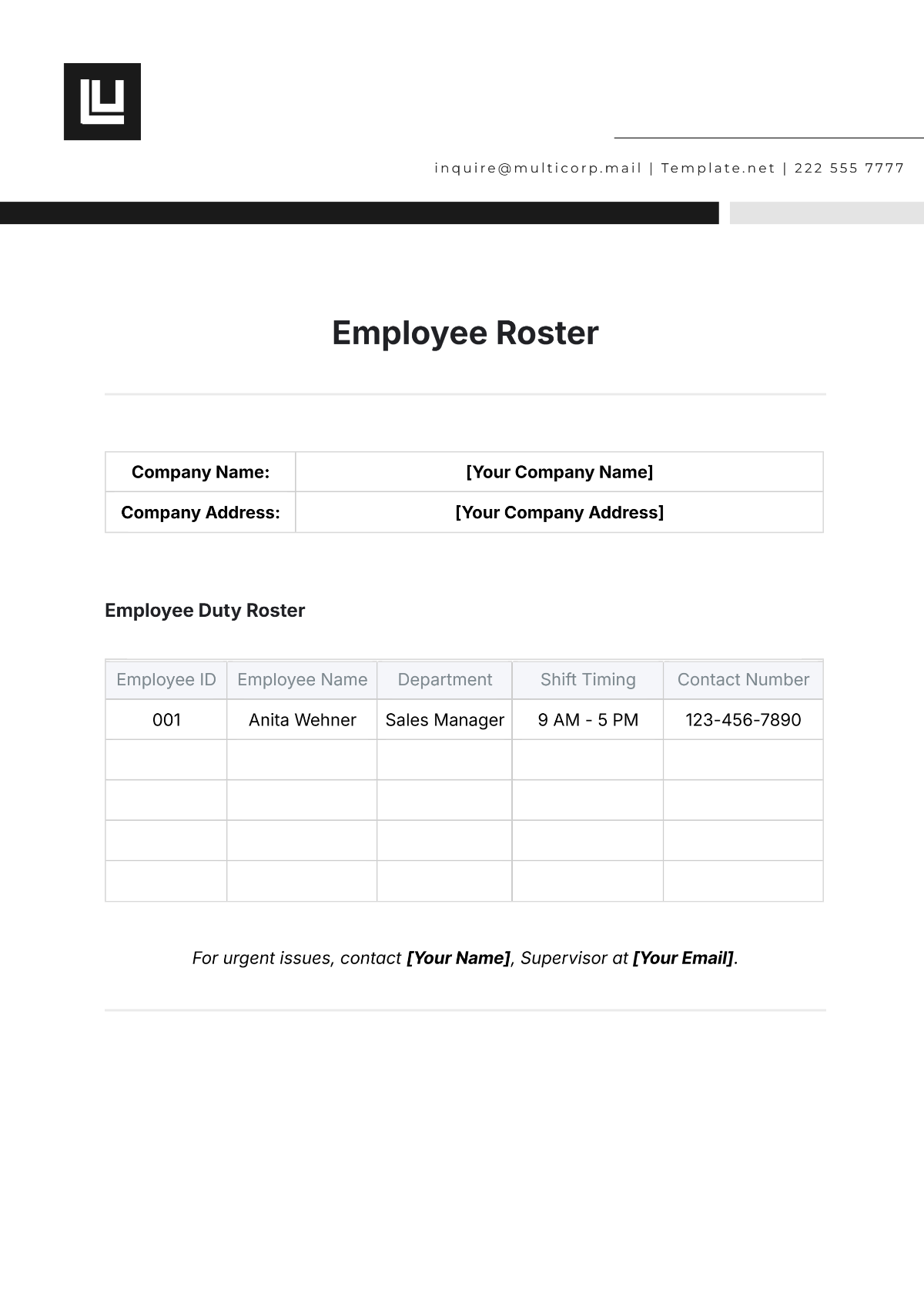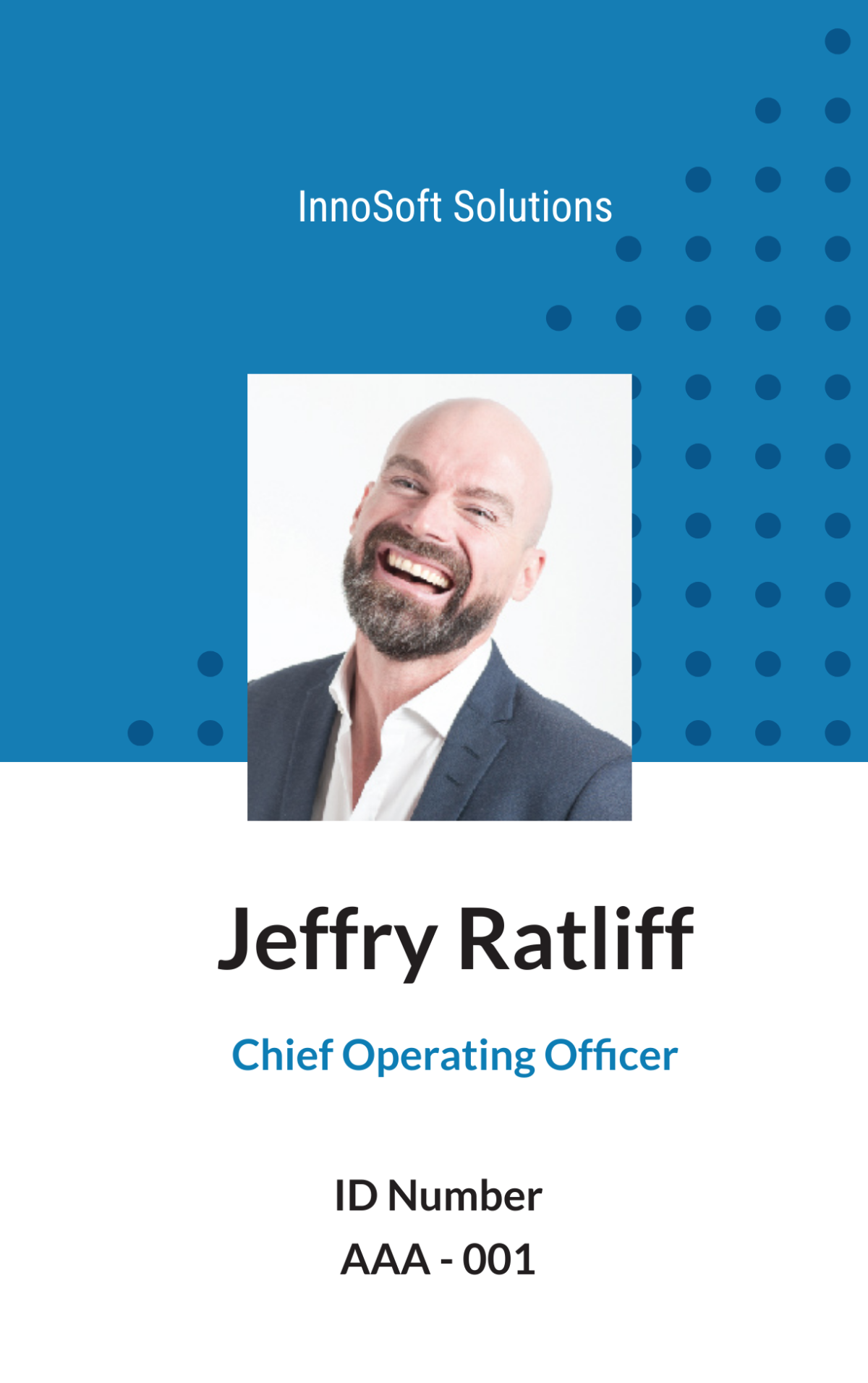Employee Wellness Standard Operating Procedure
Introduction
A. Purpose
The purpose of this Employee Wellness Standard Operating Procedure (SOP) is to establish the framework and guidelines for the creation, implementation, and management of a comprehensive employee wellness program at [Your Company Name]. This program aims to promote the overall well-being of our employees, enhance their health, and create a positive and productive work environment.
B. Scope
This SOP applies to all employees, contractors, and partners associated with [Your Company Name]. It encompasses all aspects of the employee wellness program, including planning, execution, and evaluation.
C. Definitions
Employee Wellness Program: A strategic initiative designed to improve the health and well-being of employees by offering a range of wellness activities and resources.
[Your Company Name]: [Your Company Name] is leading in the industry, headquartered at [Your Company Address], with [Your Company Number] and [Your Company Website]. You can reach us via [Your Company Email].
[Your Partner Company Name]: [Your Partner Company Name] is a key partner in our employee wellness program, collaborating with us to enhance its effectiveness.
Employee Wellness Program Overview
A. Program Goals
The Employee Wellness Program at [Your Company Name] has the following primary goals:
Improving Employee Health: To enhance the physical, mental, and emotional health of our employees through various wellness initiatives.
Boosting Productivity: To increase productivity and reduce absenteeism by promoting healthier lifestyles and stress management.
Creating a Positive Work Environment: To foster a positive and supportive work environment that promotes employee satisfaction and retention.
B. Program Initiatives
Our program comprises a variety of wellness initiatives, including but not limited to:
Health Screenings: Regular health check-ups and screenings to monitor employee health status.
Fitness Programs: Providing access to fitness classes, gym memberships, and physical activity challenges.
Nutritional Workshops: Organizing workshops and seminars on healthy eating habits and nutrition.
Stress Management: Offering stress management workshops, relaxation techniques, and counseling services.
Employee Assistance Program (EAP): Establishing an Employee Assistance Program to provide confidential counseling and support services to employees facing personal or professional challenges.
C. Program Benefits
By participating in the Employee Wellness Program, employees can enjoy various benefits, including:
Improved overall health and well-being.
Reduced stress and better stress-coping mechanisms.
Enhanced job satisfaction and morale.
Access to valuable resources for personal and professional development.
Roles and Responsibilities
A. [Your Company Name]
[Your Company Name] is the primary entity responsible for the management, coordination, and overall success of the Employee Wellness Program. Key responsibilities include:
Overall Program Management: [Your Company Name] is responsible for the strategic planning, implementation, and day-to-day management of the program.
Budget Allocation: [Your Company Name] allocates and manages the budget for the Employee Wellness Program, ensuring that adequate resources are available to support the program's initiatives.
Communication with Employees: [Your Company Name] communicates program details, benefits, and updates to all employees through various channels, including [Your Company Social Media] and [Your Company Website].
Data Collection and Analysis: [Your Company Name] oversees the collection and analysis of employee wellness data to measure the program's effectiveness.
B. [Your Partner Company Name]
[Your Partner Company Name] plays a critical role in collaborating with [Your Company Name] to ensure the success of the Employee Wellness Program. Responsibilities include:
Collaboration on Program Design: [Your Partner Company Name] actively collaborates with [Your Company Name] in designing and implementing wellness initiatives.
Resource Sharing: [Your Partner Company Name] shares expertise, resources, and best practices to enhance the program's effectiveness.
C. Employees
All employees of [Your Company Name] have an essential role to play in the success of the Employee Wellness Program. Responsibilities include:
Participation in Wellness Activities: Employees are encouraged to actively participate in wellness activities and take advantage of the resources offered.
Providing Feedback: Employees are encouraged to provide feedback, suggestions, and insights to help improve the program.
Program Implementation
A. Needs Assessment
Before implementing the Employee Wellness Program, a comprehensive needs assessment will be conducted. This assessment will involve:
Surveying employees to identify their wellness needs and preferences.
Analyzing existing health data to understand common health concerns.
Consultation with wellness experts to identify trends and best practices.
B. Program Design
Based on the findings of the needs assessment, the program design phase will involve:
Tailoring wellness initiatives to address specific employee needs and preferences.
Developing a holistic program that includes health screenings, fitness programs, nutritional workshops, stress management, and an Employee Assistance Program (EAP).
Establishing clear objectives and measurable goals for each initiative.
C. Communication Plan
Effective communication is essential to ensure that employees are informed about the program and encouraged to participate. The communication plan includes:
Creating informative materials, such as brochures and posters, to promote the program.
Utilizing multiple communication channels, including [Your Company Social Media] and [Your Company Website], to reach employees.
Providing regular updates and reminders about program activities and deadlines.
D. Implementation Timeline
A well-defined implementation timeline will be established to ensure that the program runs smoothly. This timeline will include:
Key milestones and deadlines for each wellness initiative.
Assigning responsible parties for each activity to ensure accountability.
Regular progress checks to ensure that the program stays on track.
E. Budget Allocation
A dedicated budget will be allocated to support the Employee Wellness Program. This budget will cover:
Costs associated with health screenings, fitness programs, workshops, and counseling services.
Administrative expenses related to program management and communication.
Evaluation and data analysis costs to measure program effectiveness.
Wellness Activities
A. Health Screenings
Frequency: Health screenings will be conducted annually for all employees.
Location: Screenings will take place at [Your Company Address].
Tests Included: Health screenings will encompass measurements such as blood pressure, cholesterol levels, blood sugar levels, BMI (Body Mass Index), and general health assessments.
Reporting: Employees will receive confidential reports with their screening results, along with recommendations for follow-up if necessary.
B. Fitness Programs
Availability: Fitness programs will be available year-round at Onsite Gym/External Fitness Centers.
Classes: A variety of fitness classes, including yoga, aerobics, and strength training, will be offered.
Access: Employees will have access to fitness facilities during work hours and on weekends.
Incentives: Incentives such as gym membership reimbursements will be provided to encourage participation.
C. Nutritional Workshops
Schedule: Nutritional workshops will be held monthly during lunch breaks.
Topics: Workshops will cover topics like healthy eating, meal planning, and nutrition education.
Expertise: Nutrition experts and dietitians will conduct the workshops.
Interactive: Workshops will include interactive activities and cooking demonstrations.
D. Stress Management
Workshops: Stress management workshops will be offered quarterly.
Techniques: These workshops will teach stress reduction techniques, mindfulness, and relaxation exercises.
Counseling: Confidential counseling services will be available for employees facing high stress or personal challenges.
E. Employee Assistance Program (EAP)
Availability: The EAP will be available 24/7 to all employees.
Services: Employees can access confidential counseling, legal advice, financial guidance, and other support services.
Communication: Information about the EAP will be communicated to employees through [Your Company Social Media], [Your Company Website], and internal channels.
Data Collection and Analysis
A. Data Gathering
Methods: Data will be gathered through employee surveys, health screenings, and participation records.
Confidentiality: All employee health data will be treated with strict confidentiality and stored securely.
Frequency: Data will be collected at regular intervals to track progress.
B. Data Analysis
Metrics: Key performance indicators (KPIs) will be established to measure program effectiveness.
Analysis Tools: Data will be analyzed using a Data Analysis Software to identify trends and assess the impact of wellness initiatives.
Reporting: Regular reports will be generated to provide insights into the program's success and areas for improvement.
C. Evaluation Metrics
KPIs: Evaluation metrics will include employee participation rates, health improvement indicators, and feedback.
Benchmarking: Comparison with industry benchmarks and best practices will be used to assess program performance.
Continuous Improvement: Findings from data analysis will guide continuous improvement efforts.
Reporting and Feedback
A. Regular Reports
Frequency: Monthly reports will be generated to track the progress of the Employee Wellness Program.
Contents: Reports will include data on employee participation, health screening results, feedback received, and program expenses.
Distribution: Reports will be distributed to [Your Company Email] and made available on [Your Company Website] for employees to access.
Feedback: Employees are encouraged to review the reports and provide feedback for program improvement.
B. Feedback Mechanisms
Channels: Multiple feedback channels will be available, including anonymous suggestion boxes, online surveys, and direct communication with the Employee Wellness Team.
Response: Feedback will be acknowledged, and action plans will be developed based on employee input.
Communication: Regular updates on implemented changes will be communicated through [Your Company Social Media] and internal channels.
Continuous Improvement
A. Identifying Gaps
Feedback Analysis: Feedback from employees, data analysis, and performance metrics will be used to identify gaps in the program.
Benchmarking: Benchmarking against industry best practices will help identify areas for improvement.
B. Updating Initiatives
Flexibility: The program will remain flexible to adapt to changing employee needs and preferences.
Continuous Assessment: Initiatives will be reviewed and updated regularly to ensure relevance and effectiveness.
Innovation: Innovative wellness ideas and emerging trends will be considered for incorporation into the program.
C. Reassessing Needs
Periodic Assessment: Employee wellness needs will be reassessed annually through surveys and consultations.
Alignment: The program will align with changing employee demographics and health priorities.
Strategic Planning: Findings from reassessment will inform the strategic planning process for the following year.
